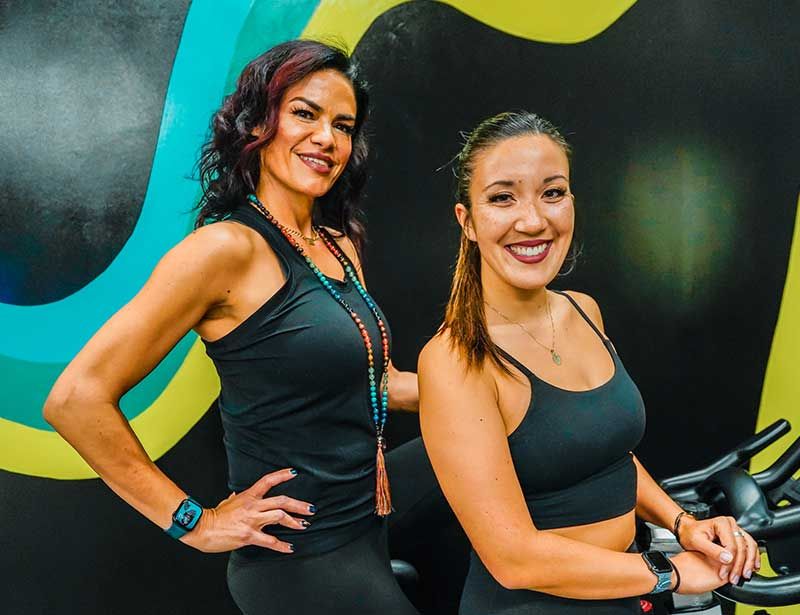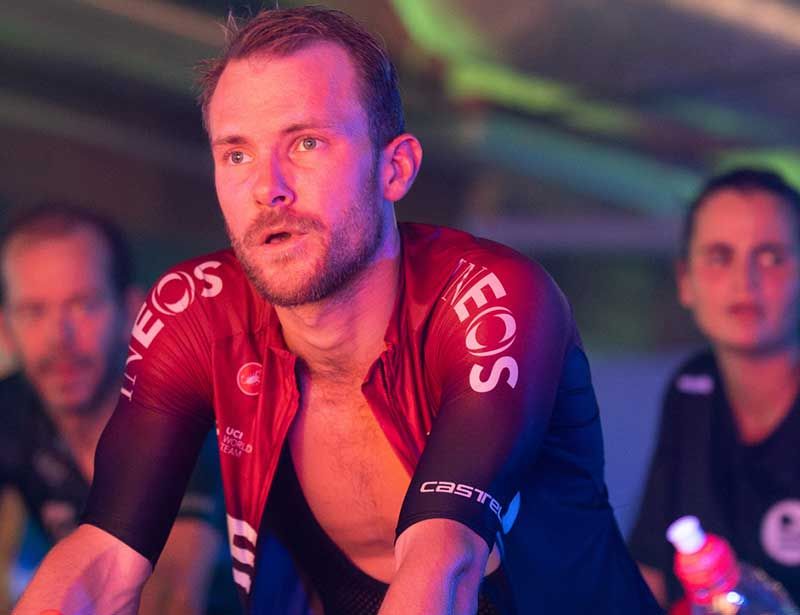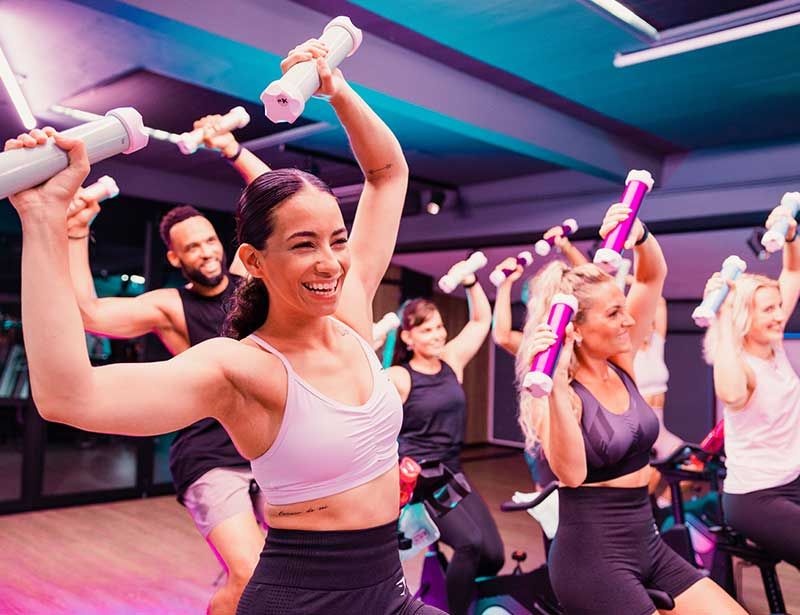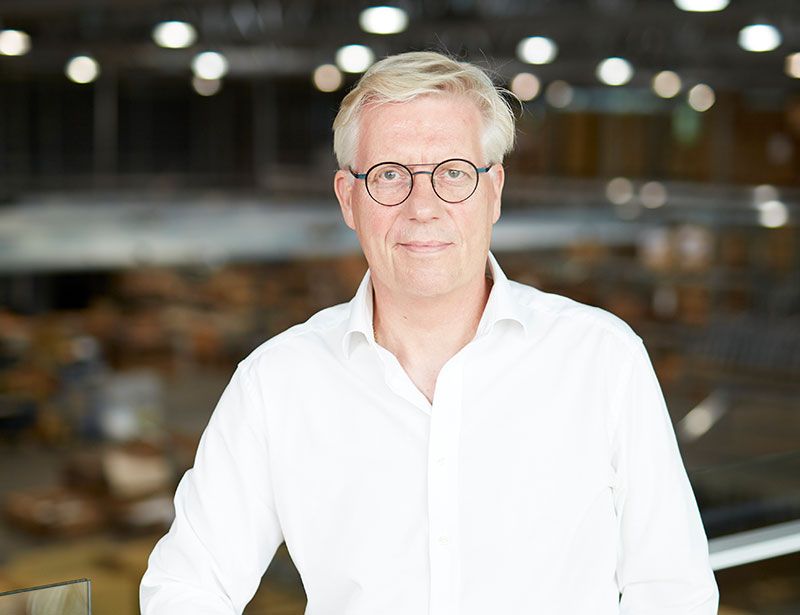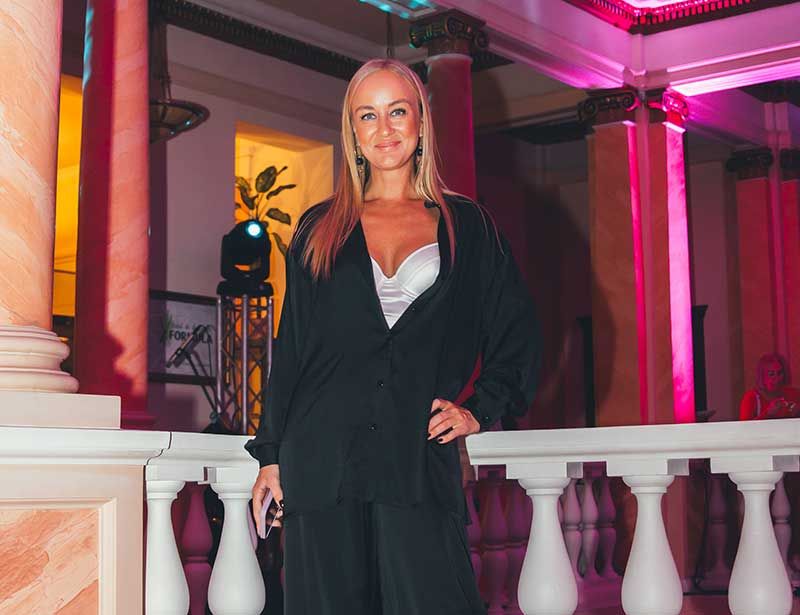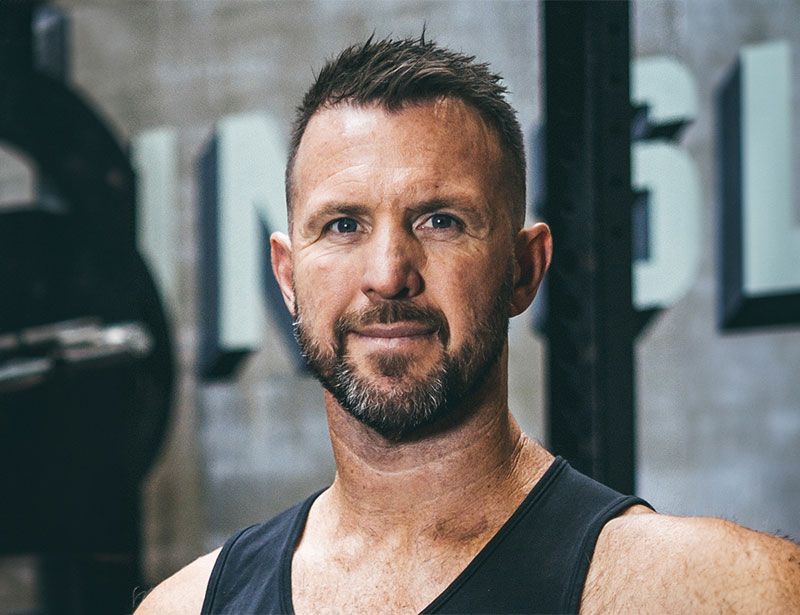Fuelled by community
What’s the Fuel Cycling back story?
MK: Margarett and I both used to instruct at another studio, but we felt something was missing. We made the decision to leave and create our own welcoming, community-focused space.
We started out as an online platform during COVID, with really loyal followers from our previous club who followed us online and got their friends involved too. And then, as we were coming out of the pandemic, a member of our community told us about a space that was available to rent.
And that was that. We opened Fuel Cycling in Monterey, California, on 12 August 2021. At the time we had 20 bikes in our studio – what we affectionately call The Tank – with a warehouse-meets-speakeasy vibe where we have everything you need, without the frills you don’t.
Honestly, I had never planned to own a studio. I’m a full-time teacher and that was all I ever intended to be. But we had a community who wanted to ride with their favourite instructors and we just felt we had to make it happen.
I knew I couldn’t do it on my own, but together with Margarett, our fantastic manager Lindsey and our girl gang of amazing instructors – five of us from our old club – we did it. Crucially, we’ve also done it with the help of our community.
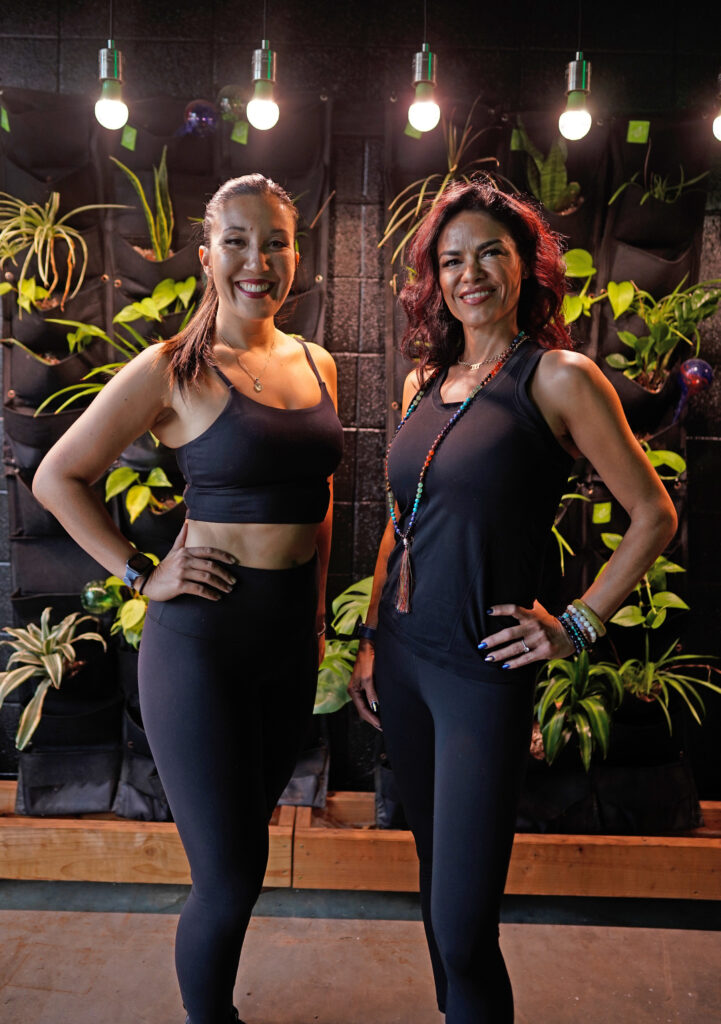
Can you elaborate?
MK: When we started, we didn’t have much. Neither did we have it all buttoned down from day one. We were warned that we’d never be able to compete against the big franchises and the corporate studios, but we had five amazing instructors, a great manager and a ready-made community who told us that whatever we did, they’d come. So, we trusted our instincts and we went for it. Our thinking was pretty much: “We have bikes, we have speakers, we have music and we have our community. We’ll be fine!” And where many corporate studios have closed over the past year, we’ve grown and grown.
For the first few weeks, the only décor we had was a sign that said ‘It feels good to be home’, but together with our community, we’ve slowly added things over time. We now have a plant wall to which our members have brought their own plants. One weekend, 10 of us got together to paint all the walls black. When we needed mirrors, we put out feelers to see who could help. We’ve tweaked little details as the months have gone by and we’ve done it together as a community.
We’re also next door to a CrossFit studio and we get great support from them. We operate independently, but we’re there to help each other.
One of my big learnings in creating Fuel Cycling has been knowing what my limits are and how to ask for help. Over the past year, we’ve made connections across our local community – far beyond our original group – as people have come forward to support and help us.
“We didn’t start a cycle studio and then try to build a community. We’re a community that built a cycle studio”
How is your community so strong?
MG: As our manager Lindsey puts it, we didn’t start a cycle studio and then try to build a community. We’re a community that built a cycle studio.
We do nurture this, of course. We’re there at local events, competing in trivia competitions as Fuel, raising money and making donations to charity, doing beach clean-ups and so on. We also have our own social events, such as our popular Pumpkins & Pinot ride.
But the point is, we were a community before we were a studio and that shows. When new people come to Fuel, it isn’t only our team who welcome them as if into their own home. Our members do the same. They go over and talk to them as if they’ve known them for years and even help them set up. People spend time in our community and just want to be part of it.
Fuel Cycling is where friendships are born and it’s such an honour to be that space. Everyone is there for each other, to the point that members will schedule visits around celebrating milestone rides with their friends, for example, or to be there if someone is coming back for their first ride after an illness. They don’t work out just to work out. They work out to see their friends. If they can’t make the ride, they’ll come to the social afterwards.
Our riders and our staff see Fuel Cycling as their studio, and rightly so. They were there when we started. They’ve grown with us and helped us when we needed help. They’ve come to class and they’ve introduced their friends. They drive our sense of community.
Our rides are great, but it’s the people who really make us.
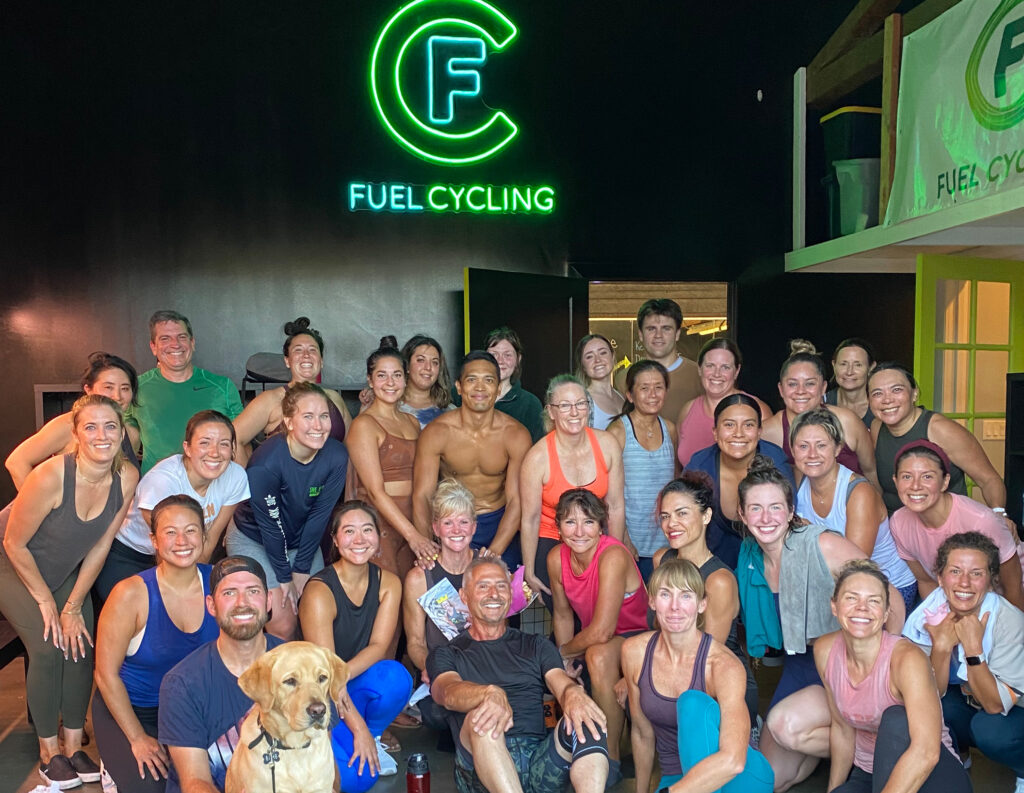
What about community beyond the studio?
MK: We saw something really interesting coming out of the pandemic: lots of new local businesses being set up by people – and especially women – who had been inspired to finally do the thing they’d always dreamed of doing.
We spent a lot of time going out to meet them, walking the streets and visiting all the coffee houses, the farmers’ markets, the little artisan shops to see how we could help them. Now, every month, we showcase a local business on our social media and we have a Makers’ Market in our studio: a cabinet where local makers and merchants can showcase their products, from jewellery to home-made soap to CBD tinctures.
It isn’t even about trying to get them to join our studio. It’s important to us that we’re part of our local community.
“It’s challenging in The Tank, but also hugely encouraging. There aren’t many places I feel as strong as I do when I’m in that room”
Tell us about your programming.
MG: Fuel45 – our 45-minute cycling class – makes up most of our schedule. We used to do Fuel60 once a week, too, but our community wasn’t quite ready for 60 minutes back then; we may reintroduce it at some point if there’s demand for it.
Alongside this are regular special classes: everything from musical themes to our Cookie Exchange ride, where everyone bakes cookies and you all swap them so you go away with one of each. We do a bingo challenge too, where you tick a box each time you ride a different bike. It gets people out of their back row comfort zones and shows them they can do it.
All our classes are rhythm rides. The lights go down and it’s like dancing on a bike. We do make the rides challenging, but it’s all done in such a fun way that people get lost in the moment and don’t realise how hard they’re working.
Our instructors get off the bike and dance around, they motivate you and remind you what you’re capable of; there’s no focus on what you can’t do. The riders cheer each other on, too. It’s challenging in The Tank, but also hugely encouraging. There aren’t many places I feel as strong as I do when I’m in that room.
MK: In terms of the programming itself, we’re fortunate to have five amazing instructors, all of whom were itching to get away from the whole corporate ‘this is the recipe’ approach. All our classes have to include a variety of rhythms, and must be adaptable to both newcomers and regulars, but other than that we leave it to our instructors to do what feels right for them.
That includes the playlist, which shouldn’t just be chosen for a good workout. It should also reflect the instructor and what’s going on with them that day. Say I feel like I need a mental boost. I’ll start with that and I’ll pick tunes and design my programme around it.
For us, music isn’t just music. It’s a soundtrack that people should get something out of at an emotional level.
“We’ve had people tell us coming to Fuel is like going to church, because we say everything they need to hear!”
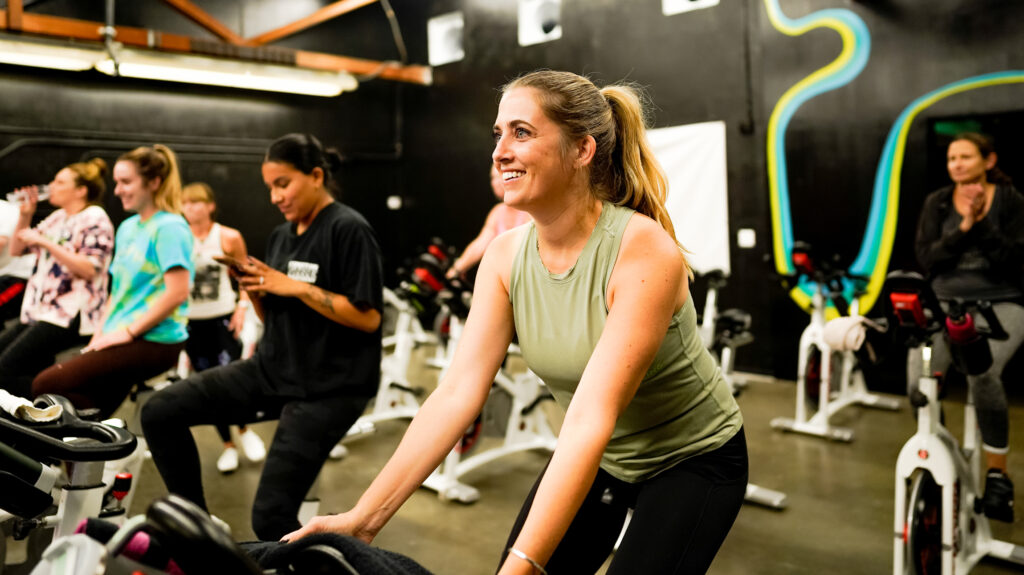
How do you train your instructors?
MG: It’s a collaborative and ongoing process. We know it’s in all our interests – and those of the studio – for everyone’s classes to be full, so we aren’t competitive with each other. We do each others’ classes as part of this; it’s fine for us all to have a different flavour, but we can still learn from each other. Nobody knows everything.
New instructors also co-teach with established instructors until everyone feels they’re ready, and we all bring something – different skills and strengths – to help them in their training.
MK: The way we connect with our members is also very inclusive: our team knows it’s always ‘we’, never ‘you’ or ‘I’. Everything we do, we do it together with our community.
We also ask our instructors to open their hearts and their lives, because inevitably there will be people in class for whom it resonates: their experiences and feelings, hopes and fears. In fact, we’ve had people tell us coming to Fuel is like going to church, because we say everything they need to hear!
MG: Crucially, though, being in the saddle doesn’t make it The Margarett Show, and the same goes for all our team. A lot of studios showcase their instructors, but that can be intimidating for riders. At Fuel, it isn’t about what the instructor can do. It’s about making every class accessible, challenging everyone in the room to exactly the right level and doing what we do together.
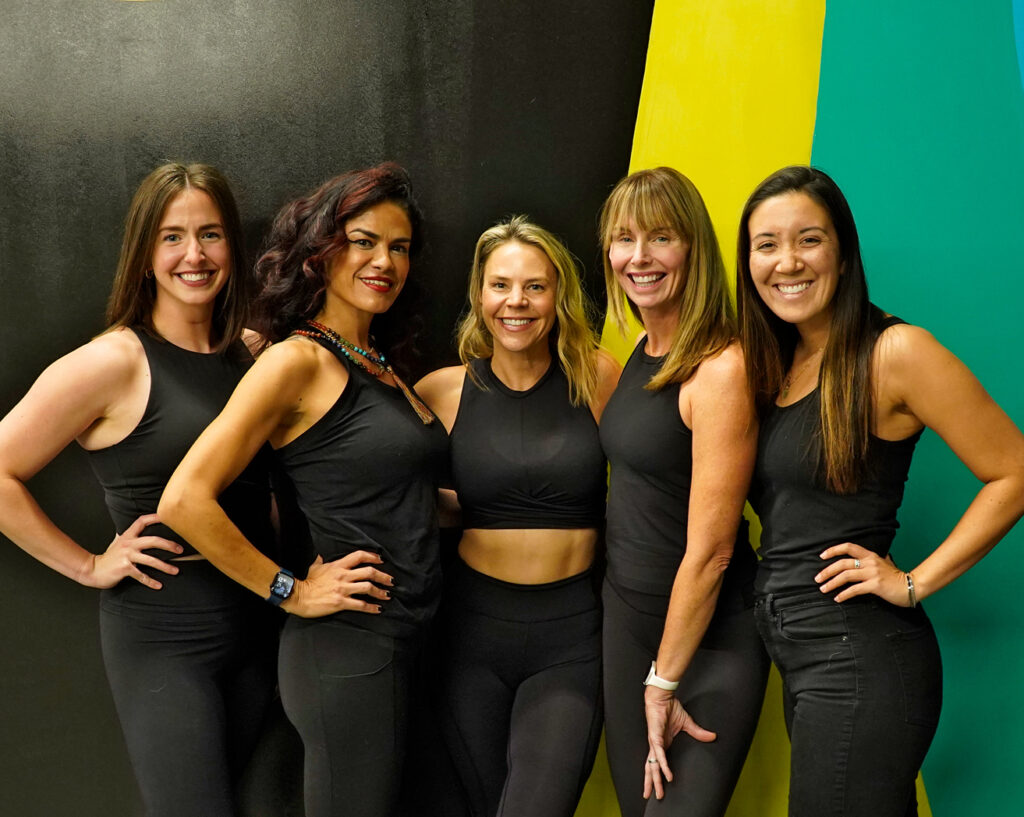
Is being women-owned important?
MG: We didn’t intentionally set out to be a women-only team and we’re very open to employing male instructors. However, we are women-owned – and also minority-owned – and I think that matters for a lot of reasons.
At the age of 45, I became a widow with five children. There was a real moment of doubt, of wondering how I would move forward. Could I do it? Was I strong enough? How would I provide for my children? Purely at a personal level, creating Fuel Cycling… it was so important for me to show my children that their mum was strong. That I could do it.
And then there’s Molly: a full-time teacher who was also studying for her special education credential at the exact same time we were launching Fuel. I think it’s so important for our community, and other women in particular, to see that.
Fuel is part of a wave of new, women-owned businesses that have come out of COVID and it’s been really humbling to be a part of that, working to see how we can lift each other up.
MK: The funny thing is, though, that we hadn’t really thought about all this when we set out to create Fuel Cycling. We did what we did because we felt we had to for our community, and my boyfriend really spurred me on to do it.
It was only afterwards, when people saw what we’d done and talked to us about it, that we realised what it meant to them, to the community, to women. So often, women are told ‘no’ – especially minority women. Fuel Cycling is proof that you don’t have to look a certain way to accomplish what you want. Certainly this year, International Women’s Day felt very different for me, when I was up there on the bike and using our studio to prove that dreams can become reality.
“We haven’t done it the easy way. We’ve done it in a really meaningful way – a way that matters to us and our community”
How are people responding to you?
MK: I think post-COVID, people are very aware of who they’re supporting and where they’re spending their money. People come into our studio and they love the ride, but even more than that, they want us to be successful. They see the love our studio has been built on, and that we continue to pour into the community, and they want to support us.
MG: I think it’s also true that people see themselves represented at Fuel Cycling. Ours is a very diverse crowd: gender, colour of skin, ages, backgrounds. We have military wives. We have grandmothers. And although 70–80 per cent of our members are women, we have men. Intimidated at first by all the women, they quickly get hooked into the community and bring their friends too, so the number of male members is growing.
We very much represent the community. Everybody has a seat at Fuel Cycling.
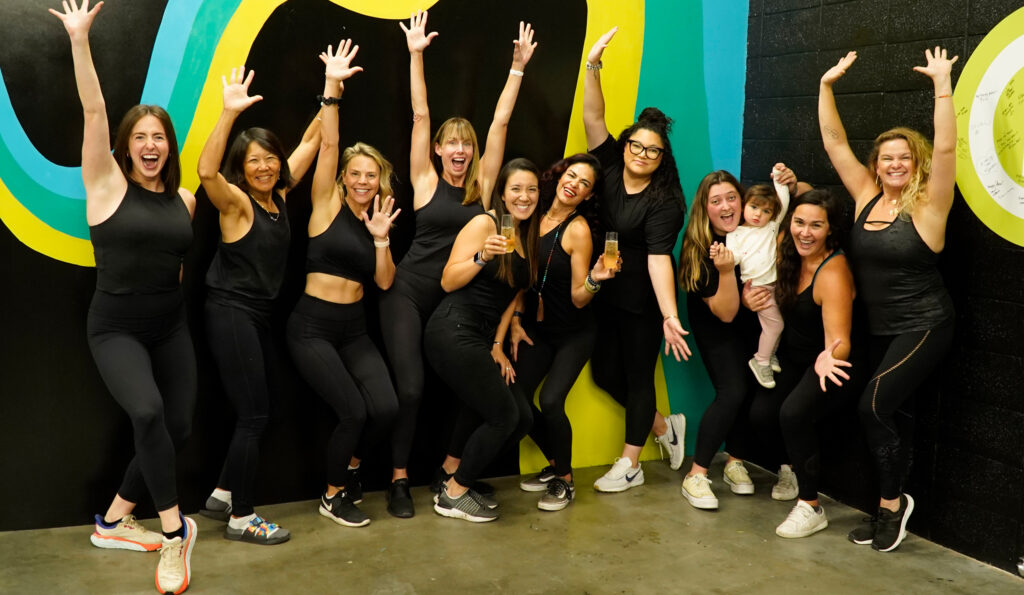
What are you most proud of?
MG: We’re a community that’s built a studio and the feedback is incredible. People say it’s like Cheers, because everyone knows your name! They say you walk in a stranger and leave a friend. Hearing things like that, it makes me really proud of what we’ve created.
We haven’t done it the easy way, either. We’ve done it in a really meaningful way – a way that matters to us and our community. I think that’s really important.
I’m also incredibly proud of the fact that, just 11 months after opening, we won Best Boutique Fitness Studio in the Best of Monterey 2022 awards. The names we were shortlisted alongside, I felt honoured even to be considered, but we won! It’s meant such a lot to our whole community.
MK: What I’m most proud of is seeing how lives have been changed by being part of our Fuel Cycling community. I always get really emotional when I see people celebrating a milestone, making friends, doing something they’ve never done before – standing up in the pedals during a ride, for example, or coming to class in new gym-wear and feeling great about themselves. I always wonder, would that have happened for them without Fuel Cycling? I’m just so proud of what we’ve all created together.
“A lot of studios showcase their instructors, but that can be intimidating for riders. At Fuel, it isn’t about what the instructor can do. It’s about what we can do together”
What are your plans moving forward?
MG: We may introduce a couple of new cycling concepts over the coming months. We’re fine-tuning what those might be, but ultimately it will be based on what our community is ready for.
MK: Beyond that, the sky’s the limit. We’ve already grown our membership to 70 and our studio to 35 bikes, but we’re just getting started.
We currently offer around 15 classes a week and could easily add more, as well as bringing in new instructors. That’s where we always look to spend our money – on top-quality staff – and we have plenty of space at our current site to grow.
Longer term, I have big dreams for Fuel Cycling. Five years from now, I’d love to be in larger premises where we have a second studio for complementary disciplines – yoga, stretching, barre and so on – as well as a juice bar. All our instructors are multi-disciplinary, so it’s just the extra studio space we’d need.
Would we ever open more locations? I don’t know – never say never. We could also go online again to make Fuel accessible to even more people. The most important thing, though, is that we built Fuel for this specific community. We will first build and grow here before we even consider going anywhere else.
cycling4cancer
I lost my mum to cancer in 2000, but the idea of cycling4cancer first came about in 2013 when a friend of mine – TV sports journalist Morten Ankerdal – approached me about a fundraiser when his dad had cancer. I was an indoor cycling instructor then, but Morten thought he could beat me on the bike. We organised a three-hour indoor cycling event and I beat him big time!
As the loser, his challenge was to raise lots of money for cancer research, which he did along with his co-hosts of Knæk Cancer – a massive televised event in Denmark which raises money for cancer research every year, and which translates as ‘Crack Cancer’.
It gave me the idea for a much bigger 24-hour indoor cycling event, which would be part of Knæk Cancer each year. The first cycling4cancer event took place in 2014 and we’ve continued every year since then.
“The event is an overwhelmingly upbeat one, filled with positive vibes and happy memories of those we may have lost”
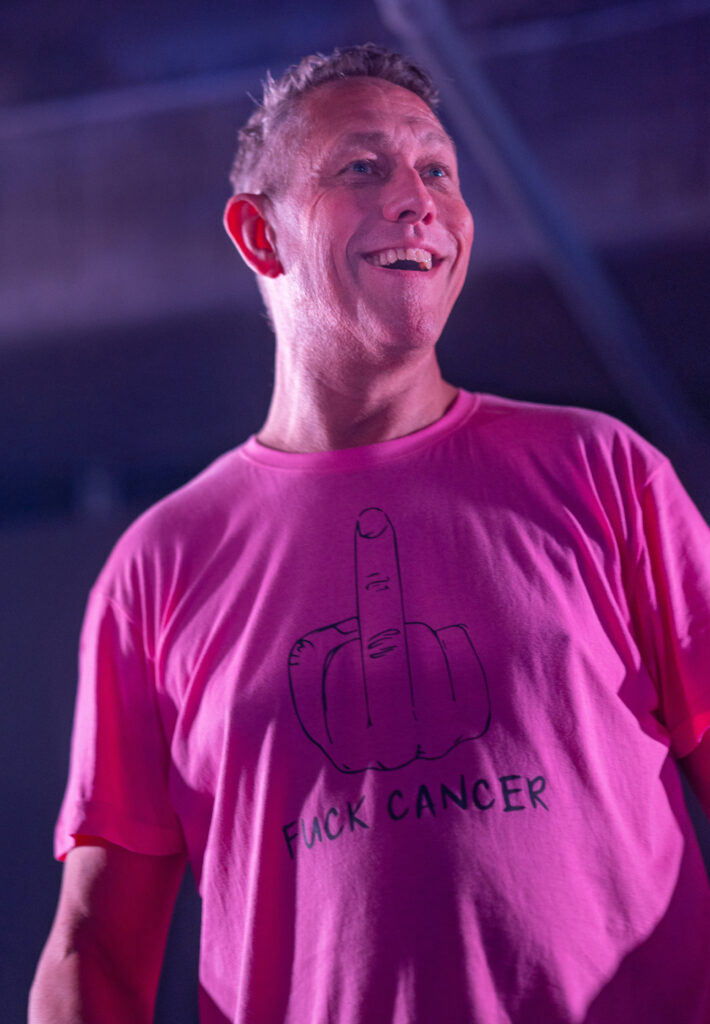
What’s the concept?
Cycling4cancer is a 24-hour indoor cycling event that finishes at 6.00pm on the Saturday of Knæk Cancer, while the TV coverage is ongoing. For 2022, that meant starting at 6.00pm on Friday 28 October and finishing at 6.00pm on 29 October.
It’s the ultimate corporate teamworking and networking event, with businesses paying for a bike – a minimum donation of DKK10,000 (around €1,350) that goes directly to Knæk Cancer – and asking their employees to ride it.
There are 24 sessions of 45–50 minutes each, with a short break in between while we change the instructor and DJ, and every bike must be ridden for the full 24 hours.
We’ve set DKK10,000 as the minimum donation because at this level, your company’s name comes up in the Knæk Cancer TV coverage. Some organisations donate more, though: in 2022 we had a bank pay DKK50,000 for one bike, while a plumbing firm took two bikes at DKK25,000 each. Other companies pay DKK10,000 but also donate DKK5–10 per kilometre cycled by their employees.
We do also have individuals who fund a bike themselves and put a team together to ride, often because they have a relative who’s sick or who they want to remember. These stories are very moving; I admit I find myself crying quite a lot throughout the 24 hours. However, the event is an overwhelmingly upbeat one, filled with positive vibes and happy memories of those we may have lost.
Finally, I have a couple of bikes where – if you really want to take part but can’t organise a team or afford a whole bike – you can ride for an hour for DKK500.
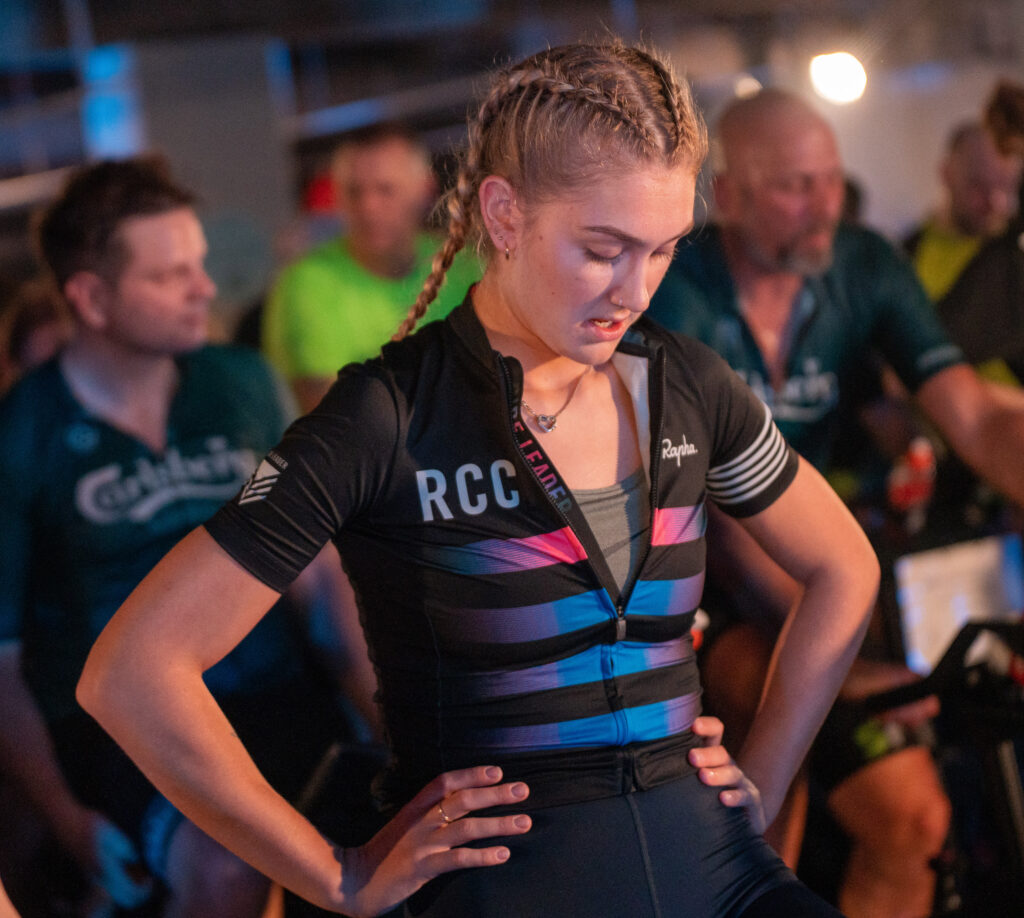
“Exercise and positivity keeps cancer at bay. I will do this again and again and again to keep raising money for cancer research”
Tell us about the 2022 event
It nearly didn’t happen, because my girlfriend was diagnosed with cancer in April and died in August. I honestly wasn’t sure I had the energy to do it. I also started to question the purpose of doing all this every year when my loved ones were still dying.
But then I reminded myself of my personal motto – that exercise and positivity keeps cancer at bay – and I decided this was no time for quitting. Cancer never sleeps, and I will do this again and again and again to keep raising money for cancer research.
And it was an incredible event, with 118 BODY BIKES provided by our sponsor Fitness Engros in action for the 24 hours. That’s 30 more than last year and there was a lot of love, happiness and sweat in the room!
People also brought family and friends to support them and enjoy the event: we had over 4,000 people in attendance.
We are hugely grateful to our 24 incredible instructors and our best-in-Denmark DJs who gave their time for free, and our sponsors who provided the bikes, the venue, the refreshments, the lighting and everything else we needed to put the event on. As always, the whole thing was done for free: not one bit of money passes through my hands.
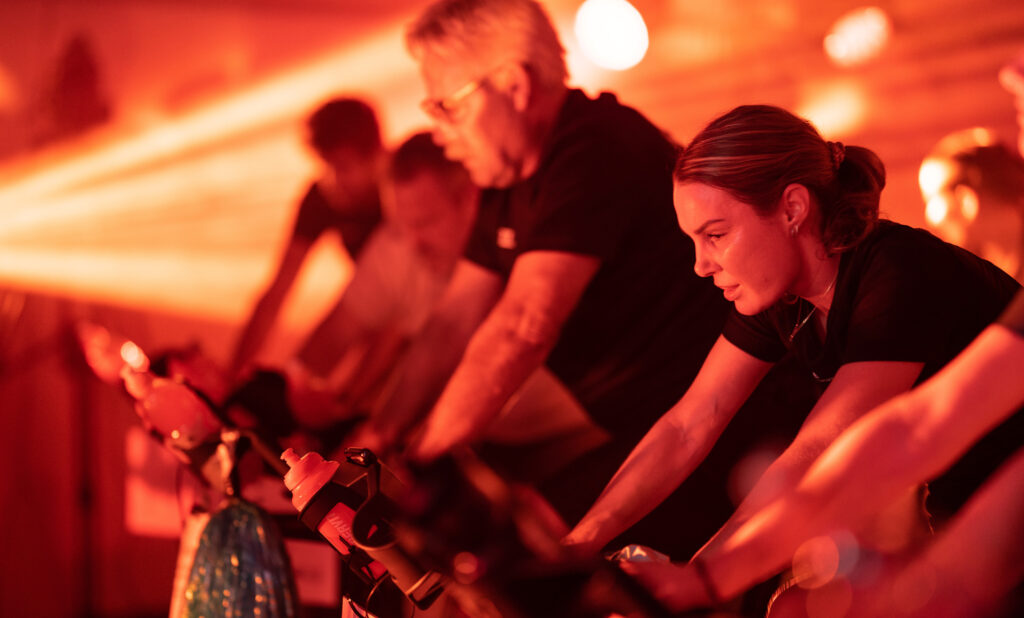
What’s your role on the day?
I used to be one of the instructors, but I now host and push to get fundraising as high as possible. Between each session, I get up on stage and ask everyone in the saddle to post on their social media and LinkedIn accounts asking for sponsorship before they start, and to post again afterwards to say how far they cycled.
I then kick every session off – calling out “Knæk!” from the stage, to which all the participants shout back “Cancer!” – before leaving it to the instructor and DJ to crank it up.
All sponsorship goes direct to Knæk Cancer using a dedicated MobilePay code, so funds are allocated to our event and we know how much we’ve raised.
And how much did you raise?
I had hoped to raise DKK3m in 2022 (a little over €400,000), but with the economic crisis hitting hard, we didn’t quite reach that target: the figure we announced on the day was DKK2.1m.
Money is still coming in, though; we’ve already passed DKK2.4m and, once the final bits of sponsorship are counted, I expect to hit DKK2.5m. I’m pleased with that. Knæk Cancer lowered its overall 2022 forecasts by 30 per cent and ended up bringing in DKK117m on the day, down from DKK150m in 2021. Meanwhile, cycling4cancer will have raised DKK2.5m compared to DKK2.6m in 2021. In spite of all the pressures in the world at the moment, our event continues to have great momentum.
Once we’ve added 2022’s fundraising to the DKK8.3m we raised between 2014 and 2021, our running total will hit DKK10.8m.
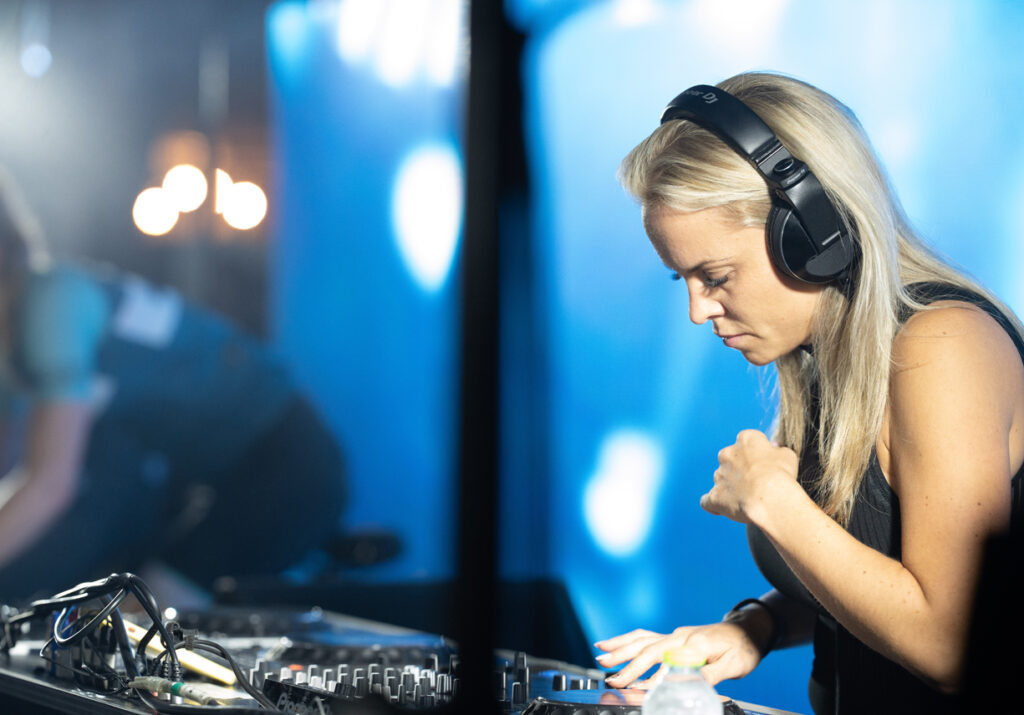
What comes next for you?
We’ll keep raising the bar with cycling4cancer and we’ll keep fighting.
At the moment, I organise just one event each year, although we do sell ‘f*ck cancer’ merchandise throughout the year. I do this alongside a full-time job and it’s all-consuming: finishing at 6.00pm on the Saturday, by the Sunday morning I was already thinking about next year’s event!
However, I would like to grow to at least two events a year – one in the spring and one in October – as well as potentially organising some pop-up events too. I want to keep driving awareness of my motto and belief that exercise and positivity can keep cancer at bay.
I’d also love to make this a global event, finding local organisers who can partner with me to host simultaneous events around the world, with all funds going to cancer research in those countries. I’d love us all to stick up our middle fingers and say together: ‘F*ck cancer’.
Reinventing indoor cycling
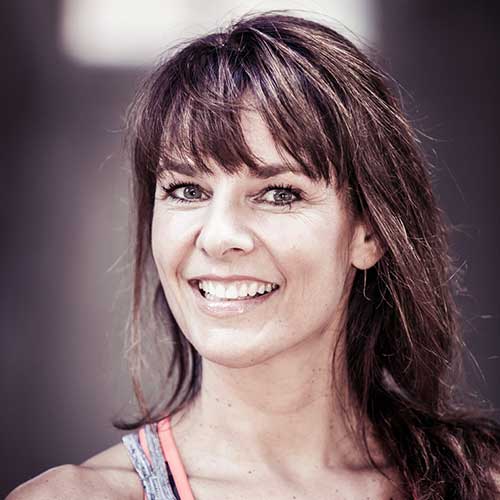
THE CREATOR
Renata Jarz
CEO, House of Workouts
”When Spinning started around 25 years ago, it was hugely popular and studios were packed,” says Renata Jarz, CEO of group exercise programming specialist House of Workouts. “But as the years have gone by it’s become skewed towards men, at least in mainstream clubs. It’s the same guys you see out on the roads, focusing on performance and metrics. It’s become a badge of honour to go as hard as possible in class.
“As the emphasis has moved in this direction, we’re seeing fewer new people coming in to the discipline. The boutiques are an exception – they’re doing well at attracting Gen Zs – but elsewhere, indoor cycling has become a love-or-hate class with the same regulars all the time. And those regulars are getting older. Younger people just aren’t gravitating towards it.
“If we want indoor cycling to thrive across the whole sector in the future, we have to do something to attract younger riders now. We need a new approach.”
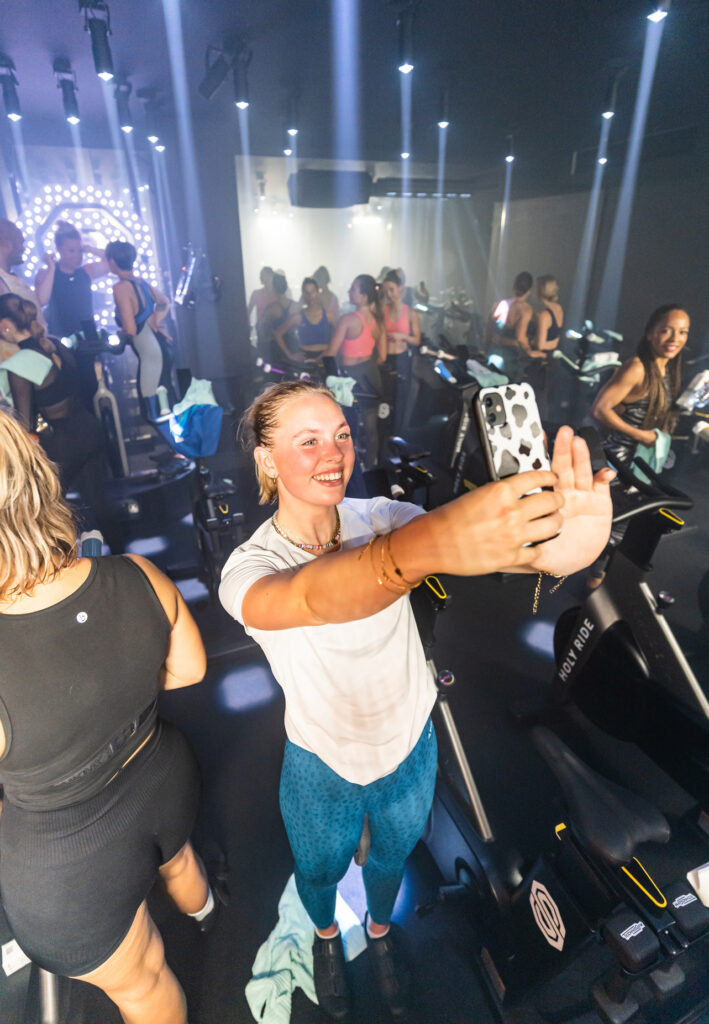
User-centric programming
This realisation led Jarz and her team to create a new programme – SclptCycle – that she describes as “a body-shaping programme that happens to be on a bike”.
She explains: “Whenever we create a new programme, our research always begins with the end user. And what we’re seeing quite clearly – both in the different cycling classes we’ve sampled and from member research at my own club – is that people don’t necessarily want to push themselves too hard.
“Younger women in particular… they want to do something, but the idea of a really tough workout stops them going to the gym at all. They want to move, but they also want to feel comfortable and have fun. They want to do things because they enjoy them, not because they feel they have to. For them, something really is better than nothing.
“They also want to feel successful from the word go. All the complex choreography we see in cycling classes… it doesn’t always work for people. It’s great for some markets – places like Amsterdam, for example – but not so good elsewhere. I call it ‘catwalk programming’. It’s up there as the exciting new concept, but it isn’t instantly ‘wearable’ outside of the big cities.
“I think that’s one of the big mistakes our sector makes: we lose sight of the consumer. People who love fitness design programmes for other people who love fitness, forgetting that this audience is relatively small.
She continues: “For SclptCycle, we took the essence of the catwalk programming – the fun, the dancing on bikes, the great music – and we modified it. We made it more accessible. We created an easy-to-follow class that’s about entertainment, fun, moving on your own terms and releasing stress, with a festival vibe courtesy of a great soundtrack.
“We’re very clear in our guidance to clubs: don’t launch SclptCycle with your regular Spin or Sprint instructors in the saddle.”
“We also made it a full-body workout by adding special tubular hand weights that you use while seated on the bike – but importantly, not while you’re pedalling. The grit inside the tubes shifts from side to side so it really works your core, not just your arms. They were designed for us by a Dutch physiotherapist and they’re great: we already use them in other House of Workouts programmes.”
A targeted audience
SclptCycle soft-launched at Saints & Stars in early September and has since been introduced at a number of clubs in the Netherlands. And the new programme is getting a lot of great feedback, says Jarz: “Younger girls and women love it. It isn’t just for women, of course – we’ve recently done a brilliant session at Nike HQ in the Netherlands, where men as well as women loved it. But we are unashamedly making women our primary audience, with branding and marketing that’s quite feminine. We’re deliberately marketing in a way that sets the right expectations, so we’re less likely to attract – and potentially then disappoint – hardcore Spinners.”
She adds: “Honestly, our sector needs to be a lot more diverse in its cycle programming. In all other group exercise disciplines, you’ll find more targeted classes. But in cycling, there still seems to be a belief that one class can fit all. It can’t. It shouldn’t even try. Not every class has to be for everyone.”
Quarterly releases of SclptCycle will encompass programming and music. “Instructor standards have sadly dropped over the last 10 years, as everyone now expects to be qualified in just a couple of days,” says Jarz. “Pre-choreographed programming helps ensure a consistent class experience.”
Alongside these quarterly releases, which all SclptCycle licence holders will receive automatically, House of Workouts will also sell special, limited edition classes via its app.
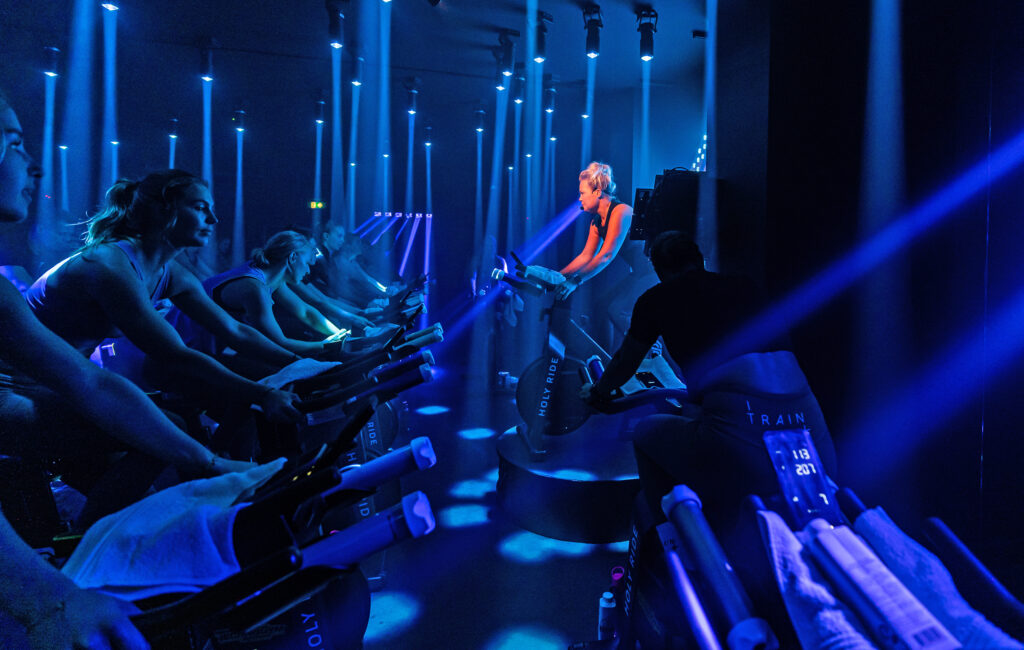
A new breed of instructor
Speaking of instructors, says Jarz, the secret of SclptCycle’s success will be very careful recruitment. “It doesn’t matter how great a programme is,” she explains. “If you market it wrong and use the wrong trainers, it won’t be successful.
“If we want to attract our intended audience to SclptCycle, hardcore has to go out the window. The whole thing has to be presented right.”
With this in mind, two-day, in-person instructor training workshops focus on fun and participant happiness rather than data. “We turn instructors into entertainers, teaching them to deliver our classes with a wink and a smile,” says Jarz. “Some people get it quicker than others, but we have tools up our sleeve to help people understand this is a new approach to cycling and they should leave all their preconceptions behind.
“We’re also very clear in our guidance to clubs: don’t launch SclptCycle with your regular Spin or Sprint instructors in the saddle. They will be too set in their ways. Bring in and train different types of people to coach this new class; you can always introduce your existing cycle instructors later, once they’ve experienced SclptCycle and are open to this new way of teaching.”
Growth plans
SclptCycle will be live in around 50 clubs in the Netherlands and Belgium by 1 January 2023, with BasicFit also set to introduce the class to its cycle studios in January.
“In the longer term – maybe six months to a year – we may make SclptCycle class content available digitally too, but for now it will only be available as a live class,” says Jarz. “That contact with the instructor, that social aspect… particularly for a programme like SclptCycle, that’s so important.”
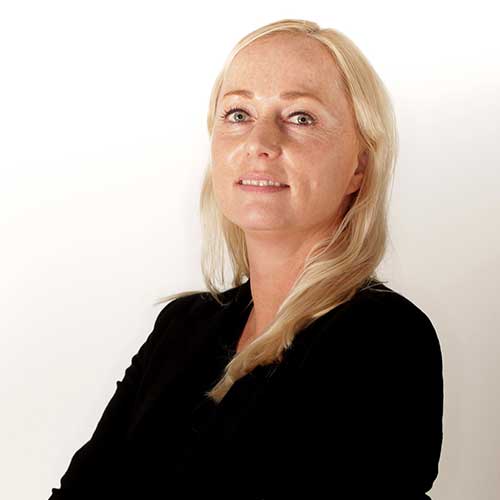
THE EARLY ADOPTER
Debbie Koekkoek
GX manager, SportCity
”We see SclptCycle as a great fit for our SportCity brand,” says Debbie Koekkoek, group exercise manager for the Netherlands-based chain of 113 health clubs.
“We’re an all-inclusive operation in the value segment and we want to make sports and fitness accessible and enjoyable to all.
“Live group exercise is an important part of what we do, and that includes our fantastic SuperCycle studios – our indoor cycling brand – where we offer freecycle classes and Les Mills RPM across the board. Some clubs also offer Les Mills Sprint.
“Compared to five years ago, though, we’re seeing indoor cycling lose ground to other types of class – mind-body, for example, which is booming across our estate. Then you look at how well the indoor cycling boutiques are doing, filling their classes throughout the day. I want more for our SuperCycle studios!
“There’s definitely a male bias among our indoor cycling regulars at the moment, so we wanted to find something that could attract a new audience, getting more women into the studio. We’re proud to be the first sports club chain to introduce SclptCycle to the Dutch fitness market.”
“I’m not normally an indoor cycling fan, but this is different. You almost forget it’s a cycling class!”
A true fusion class
Koekkoek continues: “I’d been searching for something new to introduce to our SuperCycle studios and I heard about a new programme: SclptCycle. I went to a trial class at House of Workouts and was immediately very enthusiastic about it.
“I’m not normally an indoor cycling fan, but this is different. You almost forget it’s a cycling class! Our other cycling classes are all about cardio. SclptCycle is a total body workout. It’s a total experience.
“Having done boutique cycle classes where you use light weights while pedalling, I was surprised when in SclptCycle we suddenly turned up the resistance as high as possible – so we couldn’t pedal – and picked up the resistance training tubes. I know these tubes from the BRN classes we already offer at our clubs – another House of Workouts programme – and they give your upper body and core a seriously good workout. I think it’s brilliant to introduce them into the cycling studio. It ensures SclptCycle is a true fusion class, not just about the bike.
“And that’s why I love it, and why I believe it could be just what we’ve been looking for: the concept that brings more people, and especially women, into our cycling studios.”
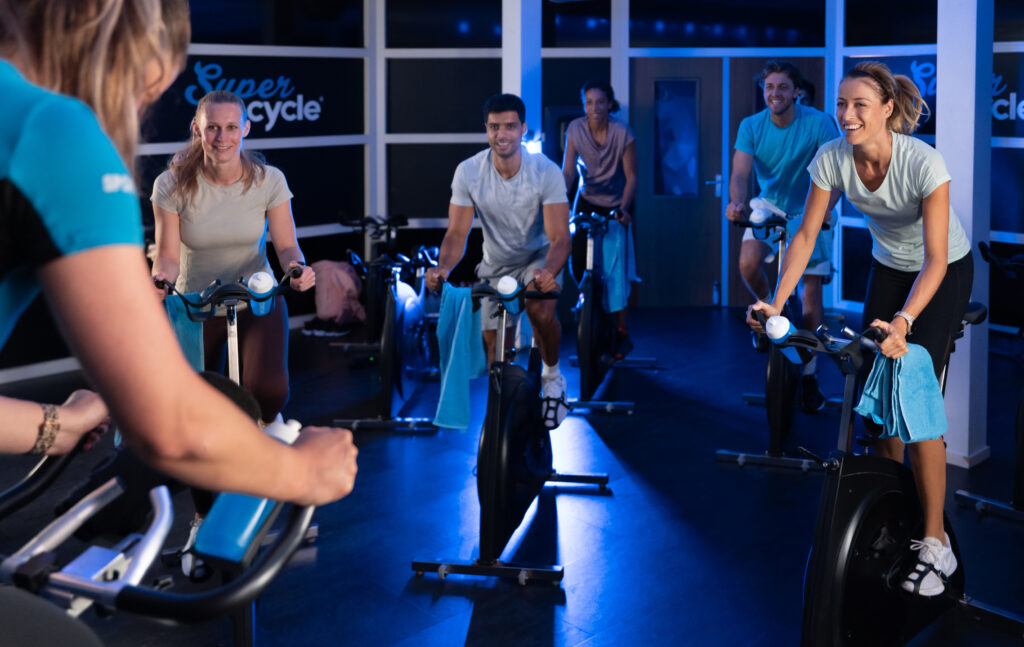
Time to think different
“By the end of 2022, SclptCycle will be available in multiple SportCity locations,” says Koekkoek. “Classes will be led by SportCity instructors who haven’t previously been indoor cycling instructors. They currently teach classes such as BRN or BodyShape and they’re all enthusiastic about teaching SclptCycle. I truly believe their regulars will follow them into the cycling studio.
“Because the way we’re talking about SclptCycle, it will appeal to a new audience: it’s a party on a bike, a full-body workout, a calorie-burner. It’s a class where you use the bike as just one of the tools to achieve a fantastic full-body workout that’s also great fun, with great music and great lighting.
“If it turns out our regular cyclists also love the class, with its 45-minute format complementing the 60- and 30-minute classes already on our timetable, that’s a positive outcome too. But it is something a bit different and I fully expect it to bring new people to group cycling.”
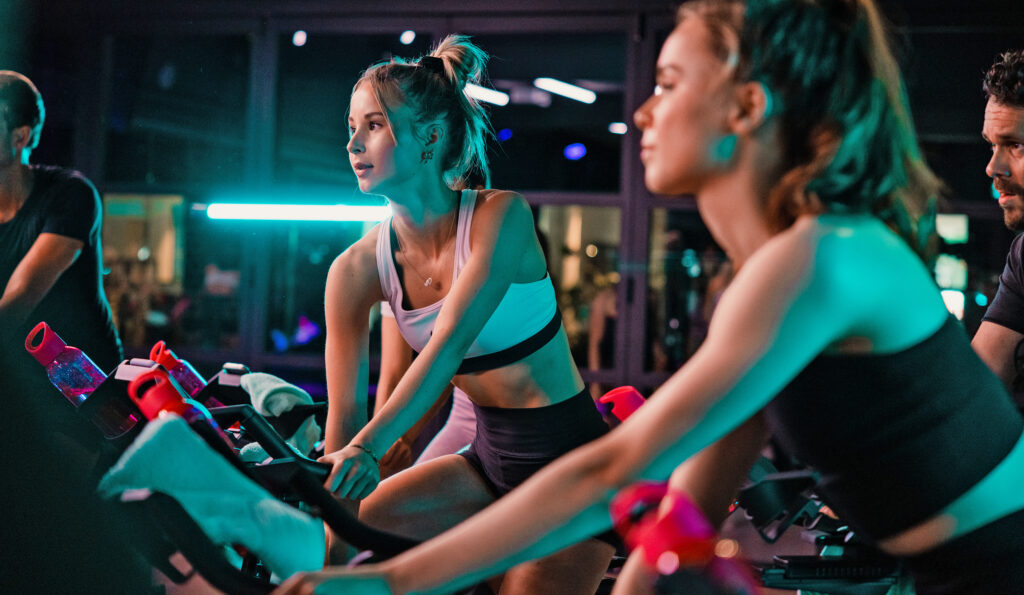
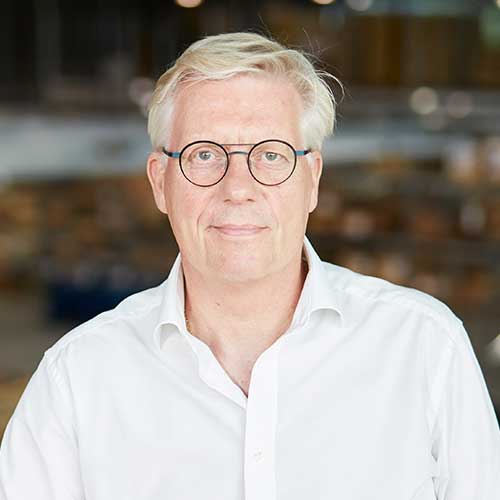
THE PARTNER
Uffe A Olesen
CEO, BODY BIKE International
”BODY BIKE is thrilled to be selected by House of Workouts as the preferred bike for its fantastic new SclptCycle programme,” says BODY BIKE CEO Uffe A Olesen.
“As soon as we met with Renata and her team at House of Workouts, we knew this was something we wanted to be part of. Their passion is so infectious. The way they see things so fresh and exciting. Their desire to do things differently so creative and inspiring.
“And over-arching all of this is a wonderful, overwhelming sense of fun in everything they do, including this vibrant, positive, life-affirming new indoor cycling programme. It feels like no coincidence that SclptCycle has come out of party-loving Holland! Who wouldn’t want to be part of this?”
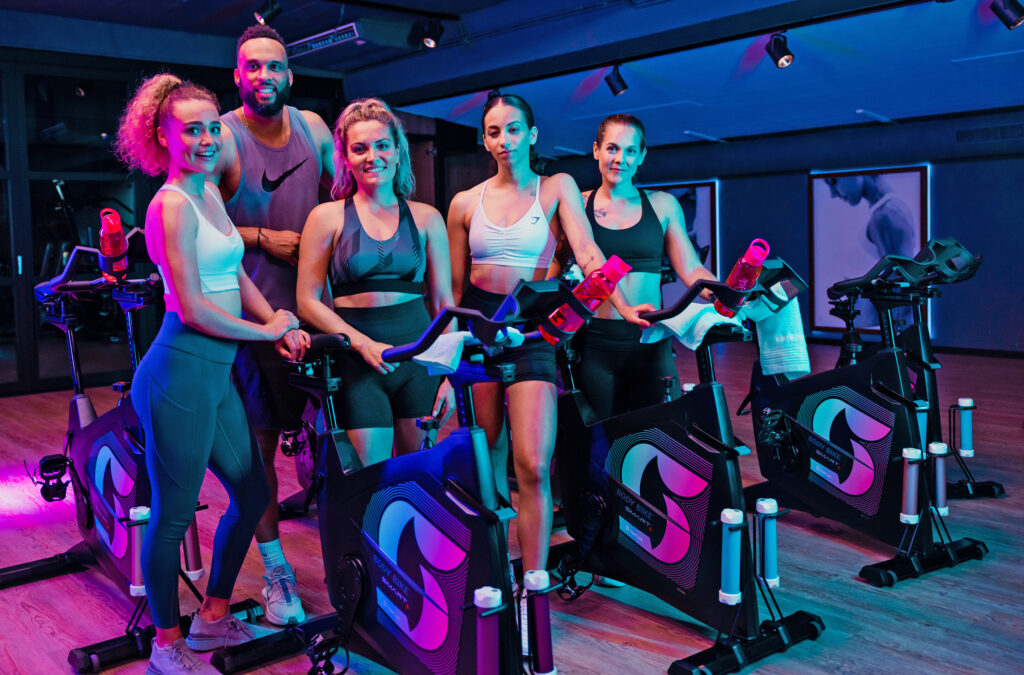
He adds: “With so much stress and negativity in all of our lives right now, SclptCycle is a programme the world really, really needs. It isn’t about stats. It isn’t about pressure to perform. It isn’t about comparing yourself to others in the room. It’s about happiness, escapism and fun”.
“I believe it has all the ingredients to be the next global fitness phenomenon.”
“There’s an overwhelming sense of fun in this vibrant, positive, life-affirming new programme”
Working in synergy
Olesen continues: “Beyond the SclptCycle programme, there are also lovely synergies between BODY BIKE and House of Workouts that make our partnership very natural.
“Both of us are based in Europe, where we build things that last; our shared passion for indoor cycling is matched only by our mutual determination to achieve the highest possible quality in everything we do.
“Renata wanted a bike that would provide an exceptional ride class after class, year after year. BODY BIKE delivers on that.
“Our companies both have strong environmental and social agendas too, including a focus on diversity and inclusion in the workplace: we both employ people with disabilities in our manufacturing processes. Meanwhile, BODY BIKE Smart+ OceanIX is built using plastic from recycled fishing nets – we’re working on other sustainable products as we speak – and House of Workouts’ weighted tube, the other piece of equipment used in SclptCycle, is manufactured using recycled aluminium. The plastic will soon be recycled too.
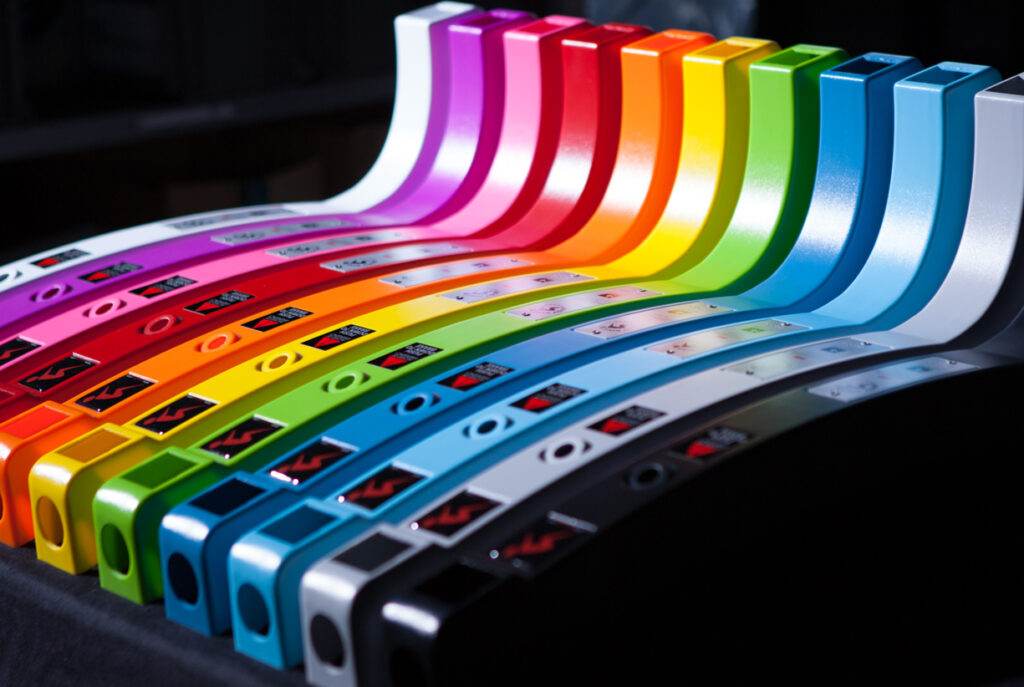
“It feels like no coincidence that SclptCycle has come out of party-loving Holland! Who wouldn’t want to be part of this?”
“Those tubes are available in all sorts of colours and can be branded or have slogans put on them – yet another opportunity to have fun when delivering SclptCycle in your club. Meanwhile, BODY BIKE’s covers are available in 10 colours and can accommodate all sorts of branding and imagery to create a studio with a real wow factor.
“Together, BODY BIKE and House of Workouts want to bring new life to cycling studios by making indoor cycling fun again – through the programming, the environment, the marketing, the instruction, and of course the ride.”
BODY BIKE and House of Workouts will be together at FIBO 2023, offering a chance to see SclptCycle in action. “Make a date for 13–16 April, Exhibition Centre Cologne, to visit a very special stand indeed,” says Olesen. “Hall 6, stand A13… Meet us in the woods!”
A new era of working out
For the Chinese, the number two is considered harmonious and lucky. The superstitious among us might therefore have hoped for better things in 2022, but in the end, it proved to be another hugely challenging year.
As Russia’s illegal war in Ukraine rumbles on – see our interview with Mariia Brezytska, general manager of Formula Wellness & Spa in Odessa – our continued reliance on fossil fuels leaves us vulnerable, exposed to astronomical price hikes for the electricity, gas and oil we need to power our businesses and our lives.
Indoor cycling may not be power-consuming; it can even be energy-generating, as we discover in this issue’s must-read supplement, A Global Crisis? But beyond the bikes, ours is an energy-hungry sector.
So, what do we do? From smart facility management to embracing renewables, our experts share their short- and long-term advice in A Global Crisis? This is compulsory reading for us all.
One thing is for sure: we must not give up. What our sector brings to society – each and every club, gym and studio – is an essential health service. This is just one more crisis we must navigate, and navigate it we will.
In the meantime, I’d like to see us focus on providing fun in a world where there’s currently little fun to be had. After all, this crisis isn’t only affecting businesses. Individuals and families are overwhelmed by their own financial worries, and they are looking for release.
We can provide it. During the pandemic, we spoke to operators who had asked their trainers to recognise the stress everyone was feeling and not push too hard – to focus on making every workout fun and social. Let’s do similar now. Let’s put ourselves out there as places where people can escape and forget their worries for a while. This would be my vision now and, indeed, moving forward. We need to make fitness more fun.
That’s why I’m delighted that BODY BIKE is partnering with House of Workouts, as preferred supplier for its wonderful new SclptCycle programme. Targeting women in particular, SclptCycle is about happiness, and it has all the ingredients to be the next global fitness phenomenon. I hope it heralds a new era of working out for fun – one in which indoor cycling leads the way.
My very best wishes for the festive season and a prosperous 2023.
Uffe A. Olsesen
CEO, BODY BIKE® International
Selling normality in Ukraine
Tell us about your club
Formula Wellness & Spa is a large and beautiful club right in the heart of Odessa. It’s a very interesting building architecturally, as it was a theatre until it opened as a health club and spa in March 2006. It was also the first club of its kind in Odessa, with such a wide range of facilities all under one roof, spread over three floors and around 4,500sq m.
We have a 25m swimming pool, a gym and over 30 types of group exercise class, from HIIT to indoor cycling, dance to pilates, TRX to aqua classes. There are also dedicated yoga and CrossFit studios, two squash courts and a fitness café. Alongside this is a separate spa zone with a Turkish steamroom, Finnish sauna and a salt room, as well as spa treatments including medical treatments conducted by doctors.
“Indoor cycling isn’t a big thing yet in Ukraine, but it’s working well for us. Before the war, our cycling classes were waitlisted”
Our members typically live, work or go to school nearby and it’s a very family-orientated club: the average age of our members is around 45 years, as parents come with their children of various ages, many of whom go on to become adult members themselves. Membership, including access to all facilities, costs €1,000 a year.
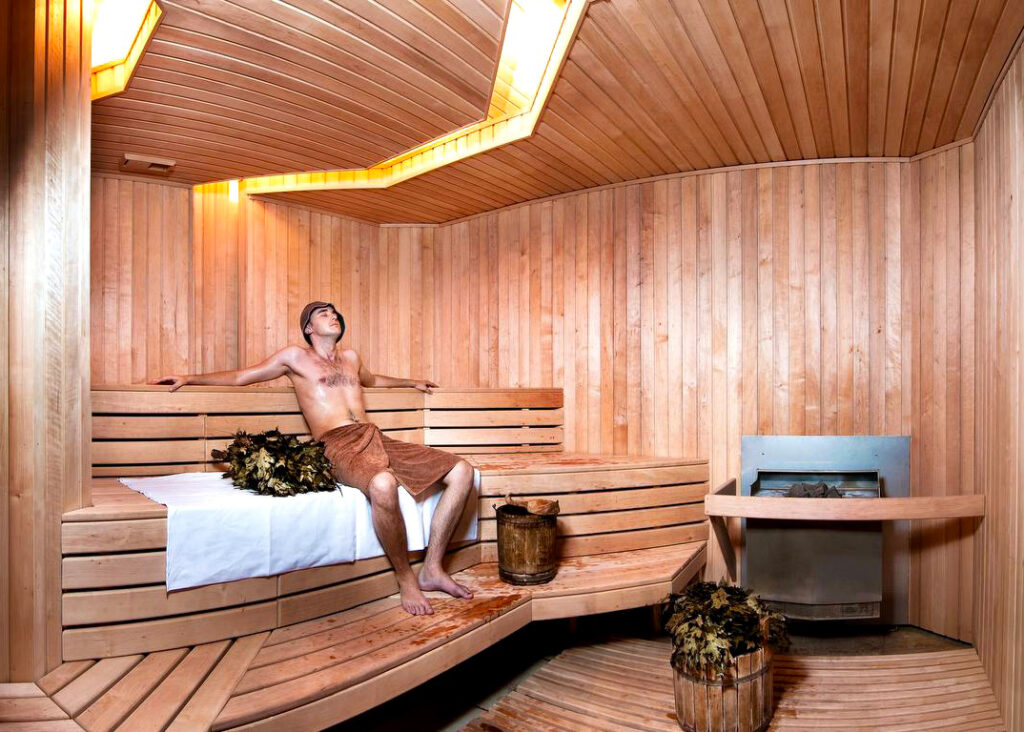
How popular is indoor cycling?
Indoor cycling is fairly new at our club – we only introduced it about two years ago – but it’s my favourite group exercise class because the results are amazing.
Indoor cycling isn’t a big thing yet in Ukraine and it’s quite unusual for clubs in Odessa to offer it; there are only one or two that do. Even in Kyiv, only a few clubs offer indoor cycling classes.
It’s working really well for us, though. At first, our members were unsure about it: they worried it would be too hard a workout. But then a few people tried it and enjoyed it and the word spread. Before the war, it had got to the point that our cycling classes were waitlisted. We were really proud of that.
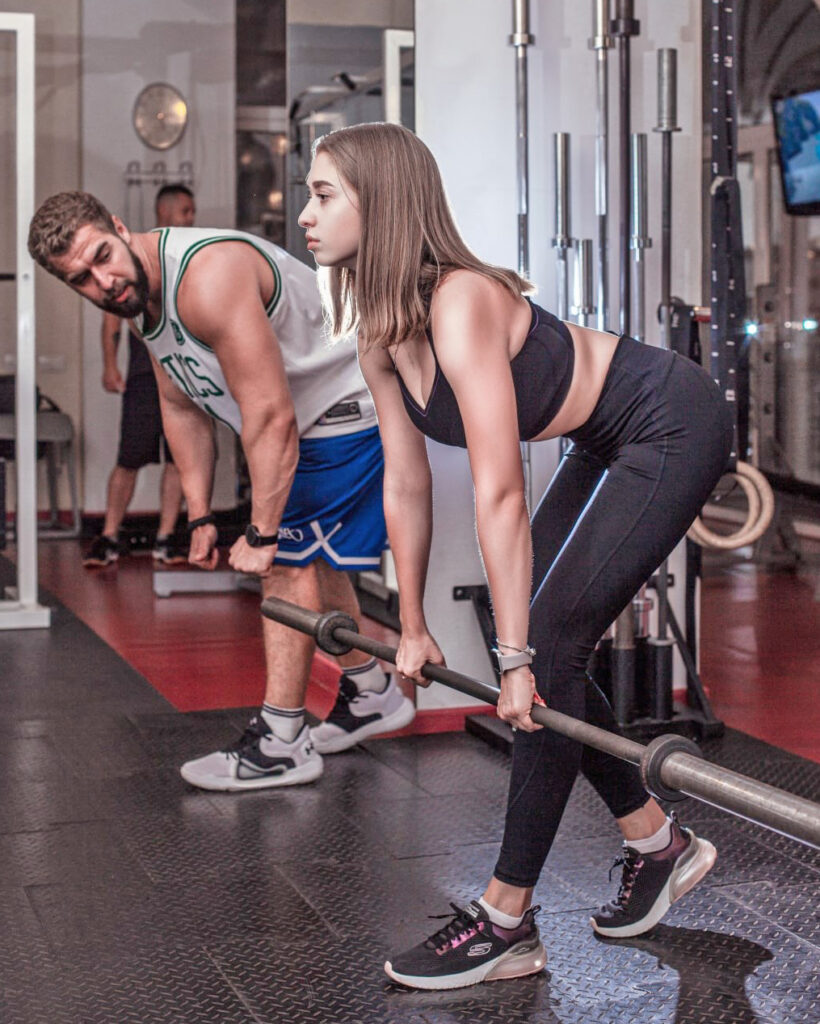
How has the war impacted your club?
The war has brought a lot of changes. When it started, we had to close our club for three months and stop all our activities. It was only at the beginning of June that we decided to slowly start back up again, with our swimming pool and spa centre only re-opening in October. We’re still offering less group exercise at the moment: around 25 per cent of our usual class schedule.
In terms of our membership, before the war we had 1,500 members and we welcomed around 450 people a day. Now we have 1,000 members and maximum 200 visits a day.
Of those 1,000 members, around 70 per cent were our members before the war. The other 30 per cent have either moved over from other local clubs – Odessa might be safer than other parts of the country, but it isn’t 100 per cent safe and many clubs are still closed – or else they’re people who have relocated to Odessa from hotspots of the war, moving to our city for its relative safety.
What we are seeing, though, is that people aren’t committing to annual memberships any more, or even six-month memberships. They’re buying a month, maybe three months at a time – sometimes even just two weeks.
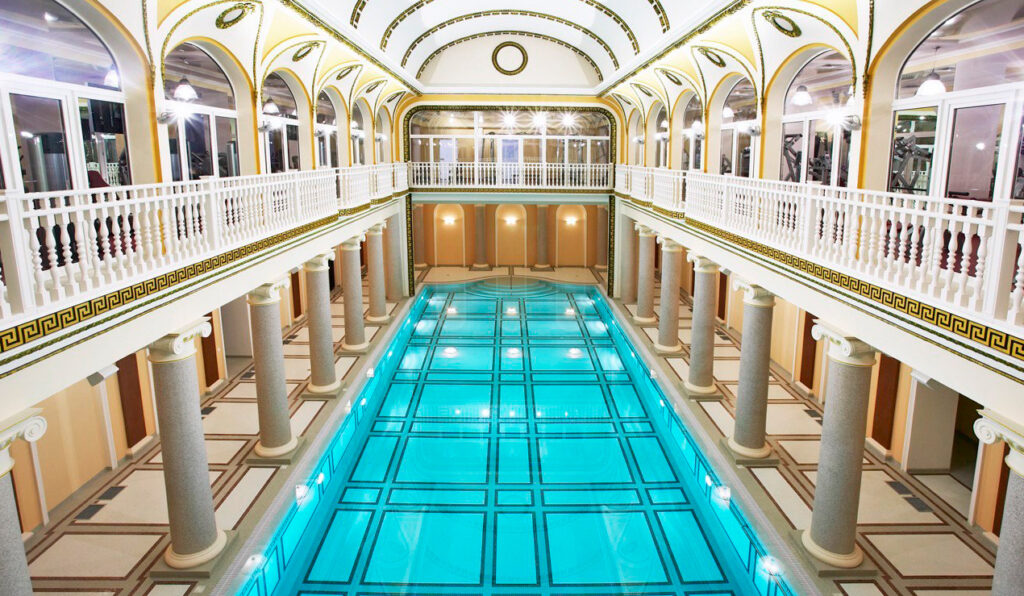
How close to the fighting are you?
Odessa hasn’t been one of the war’s main hotspots so far, but some of our members and team members have gone to the front to fight. It’s impossible to contact them or know where or how they are, but we’re incredibly proud of them and hope they will return safely so we can thank them for their bravery.
There have been times when the war has come very close, though. On 23 July, rockets attacked the sea port right in the centre of Odessa. It was like a horror film. There were fortunately no victims, but children were crying, people were running everywhere, our team members couldn’t remember what to do – where to take our members to ensure they were safe – even though we’d built a shelter on the ground floor of the club before we re-opened. It was the first time any of us had experienced anything like this and people panicked. It was an important lesson in embedding our safety procedures.
“People aren’t committing to annual memberships any more. They’re buying a month or three months at a time – sometimes just two weeks”
Now, I actually feel safer at work than I do at home – ours is a big, strong building with a shelter, which I don’t have at home – but as we speak, the last few days have still been horrible, as our city has been under constant drone attack.
Even now, I find it so hard to believe all this is really happening. I feel like I’m watching a movie, or else I wake up in the morning and feel like it must all have been a bad dream.
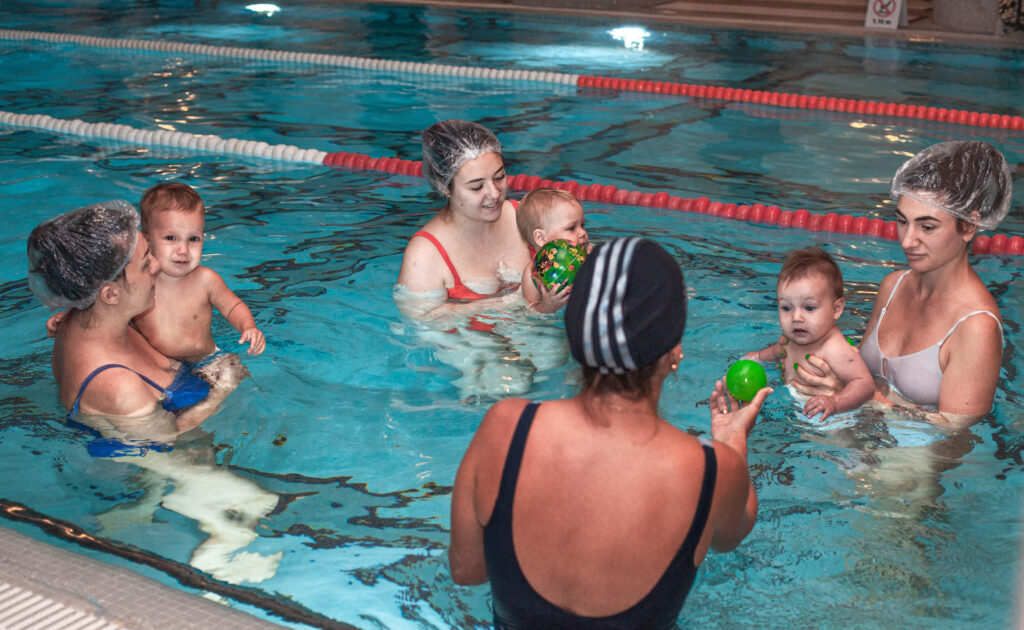
Why re-open Formula so soon?
Choosing to start things back up again was the hardest thing we’ve done, and we thought about it for a long time before we actually did it. We didn’t know how many of our members were left in Odessa, because when the war came, many of those who had a chance to move out of Ukraine did so. We also didn’t know how willing people would be to spend their money on fitness.
“No matter what happens now, I will stay here with my team. This is my country and I don’t want to be anywhere else.”
So, we didn’t know if we’d have enough money to pay our team’s salaries or our utility bills. Choosing to re-open could have been more damaging to our brand and our business than staying closed until things were more stable.
We also have a smaller team now as some people have moved away – as indeed I did for a while. I’m a single mother with two children and I was afraid, so initially I moved to Moldova to escape the war. However, I came back when we decided to re-open the club. No matter what happens now, I will stay here with my team. This is my country and I don’t want to be anywhere else.
And honestly, our team has been fantastic. The most positive thing to come out of all this was their response when we told them we were going to re-open. We asked who was ready to work and everyone who was still in Odessa said yes.
Additionally, not one of them asked about salary. They just wanted to know the schedule and how they could help get Formula up and running again. They’ve been so dedicated and have worked so hard to make re-opening possible. Everyone tells me they’ve really missed having a routine, going to work and speaking to colleagues and members. People are working for the pleasure of feeling normal again.
Our members also tell us they’re so glad we’re open. People need to do something with their stress at the moment, and fitness and sport are the best possible things for this.
“Everyone tells me they’ve really missed having a routine. People are working for the pleasure of feeling normal again.”
Will the war change things forever?
I’ve been at Formula for 13 years now and I can confidently say our club won’t change as a result of the war. We’re confident the business will come back. People need to do familiar things. They need to deal with stress. Our members tell us they’ve missed their fitness and spa treatments. They’ve missed being able to look after themselves.
So for now, we’ll work to build the club back up again, getting memberships and revenues back to how they were before the war. And then, in the second half of 2023, we’ll look to do all the work we had planned for 2022.
Because we had big plans, including building a new reformer pilates studio and launching new spa treatments for face and body. That’s all on hold while the unbelievable horror of the war continues, but it is just a pause. We’ll get back to our plans in 2023.
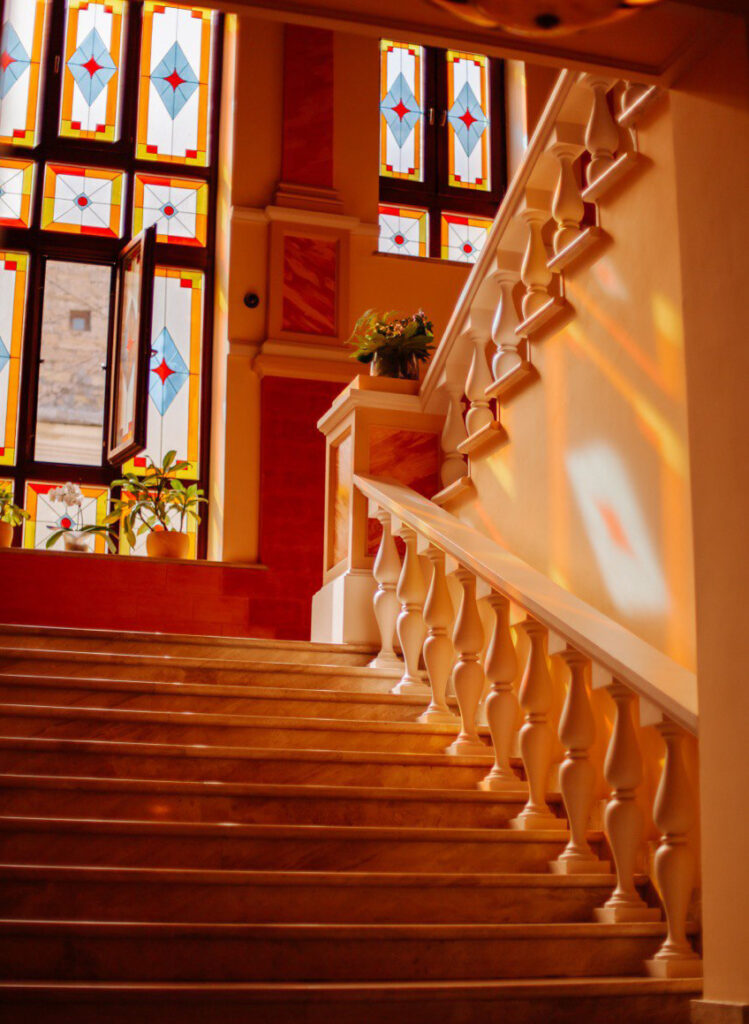
What are your hopes for the future?
I always try to think positively, so I look forward to a future – just a couple of years from now – when all our cities have been rebuilt and restored to their former glory. I hope it will be a new era for our country, when Ukrainians return home and we welcome tourists and share our experiences with them.
In the meantime, I simply wish for a peaceful country where I don’t have to worry for my children every time they go to school. My hope and belief is that before the end of 2023, we will have peace.
Information correct at the time of publishing
Trending now
#1 Retaining relevance
It’s true that in the US, Mindbody recently reported a 39 per cent drop in cycling class attendance (Jan–July 2022 vs Jan–July 2021). Yet it’s important to note that group cycling wasn’t the only discipline to feel the pinch: yoga was also down 31 per cent, dance 14 per cent, CrossFit 9 per cent. Equally important to note that this is data for a market hit by Flywheel’s demise and SoulCycle’s multiple studio closures.
Meanwhile, other brands are doing well – even in the US. Barry’s is moving ahead with the roll-out of its RIDE x LIFT concept, for example (see trend #7), while Xponential’s CycleBar now has more than 260 studios open and agreements signed to move into Japan, Australia and New Zealand.
And indoor cycling remains the #1 group exercise format in markets like the Netherlands, where concepts such as Holy Ride have been inspired and shaped by customer demand.
So, the fall isn’t universal. Indeed, as Peloton adjusts and restructures for a world in which consumers have a choice about where they exercise, it seems in-person is where it’s at once again.
The key is this: indoor cycling is still very much alive when done well. Whatever their model, fitness facilities must continue to innovate and experiment within their cycle offering to keep it relevant – a go-to workout – in an era in which Experience, with a capital E, is now the customer expectation.
Of course, there’s only so much you can do on a static bike, so experience will lean into the environment, soundtrack, community and vibe you create as much as the programming (which, incidentally, still has scope for innovation – see trends #7 and #10).
As Holy Ride’s Tom Moos told RIDE HIGH earlier this year: “Indoor cycling will become increasingly immersive and experiential. There are still a lot of dark boxes at the moment!”
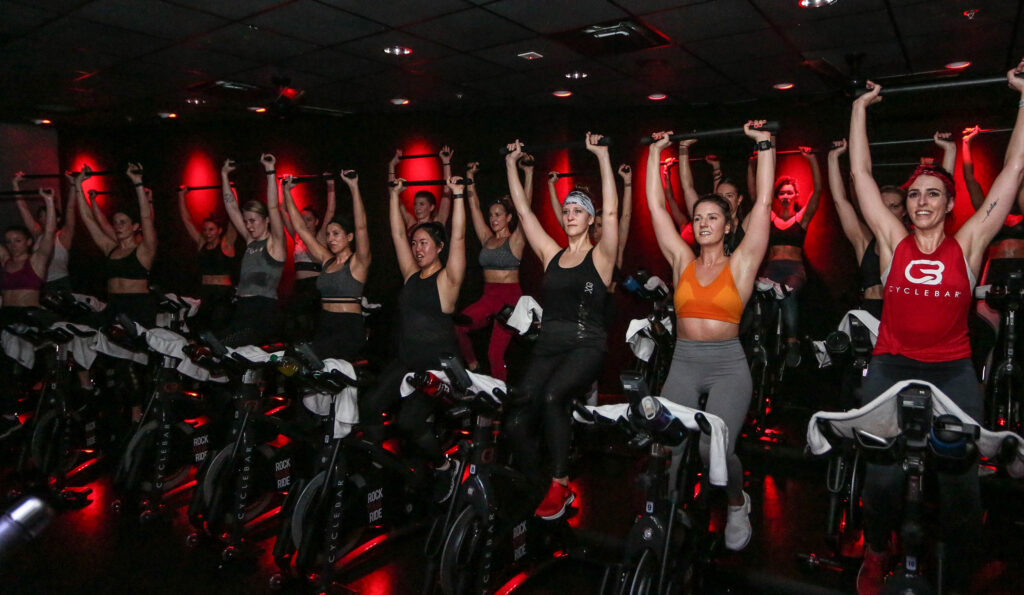
#2 Boutiques buddy up
Ever since the pandemic wreaked havoc on the fitness sector, many standalone – and especially single-discipline – boutiques have been finding it particularly hard-going.
“Even pre-COVID, businesses in our sector had struggled: there were record attendances at boutique studios, but head office costs made it hard to make money,” the founders of UK-based United Fitness Brands (UFB) told us when we interviewed them in May 2022. “We realised there was an opportunity to drive significant economies of scale by joining forces.”
It therefore comes as little surprise that more and more boutique brands are ‘buddying up’, coming under one roof at head office, in-club, or both.
UFB, for example, has now brought together four boutique operations, primarily at a head office level but also via a number of dual-brand locations in London. Its founders told RIDE HIGH they now hope to create multi-brand studios in smaller cities across the UK.
Elsewhere we’re seeing different takes on buddying up. In the Netherlands, Urban Gym Group (UGG) has brought multiple fitness brands under its umbrella, including boutique brand HIGH STUDIOS. Offering strategic guidance, shared resources and a cluster approach to conquer target cities – notably Amsterdam – with its portfolio of brands, UGG has also grown the reach of HIGH STUDIOS by creating HIGH-branded group exercise studios inside its ClubSportive and Trainmore clubs.
“Ever since the pandemic, many standalone and single-discipline boutiques have found it hard-going”
Then there’s newcomer Drop Fitness (see our chat with founder Jeb Balise in our special cost of living supplement: A Global Crisis?). Drop opened its inaugural site in New Jersey, US, in May 2022, bringing together four existing, third-party, best-in-class boutique brands alongside private training and a gym floor. All available on a ‘pay for what you want, when you want’ basis, Drop pays each boutique brand a revenue share.
“It’s a great way for boutique brands to grow and scale across the country, beyond the big cities where they traditionally operate,” says Balise. “For a boutique to come out to the suburbs on its own would cost so much time, energy and money, all for a 2,000sq ft space. Town planning permissions can sometimes be brutal, and doing it for a 25,000sq ft space is much more efficient.”
Expect to see more of this in 2023 as boutiques battle to weather not only the repercussions of the pandemic, but now also the energy crisis, spiralling inflation and expectations of salary increases.
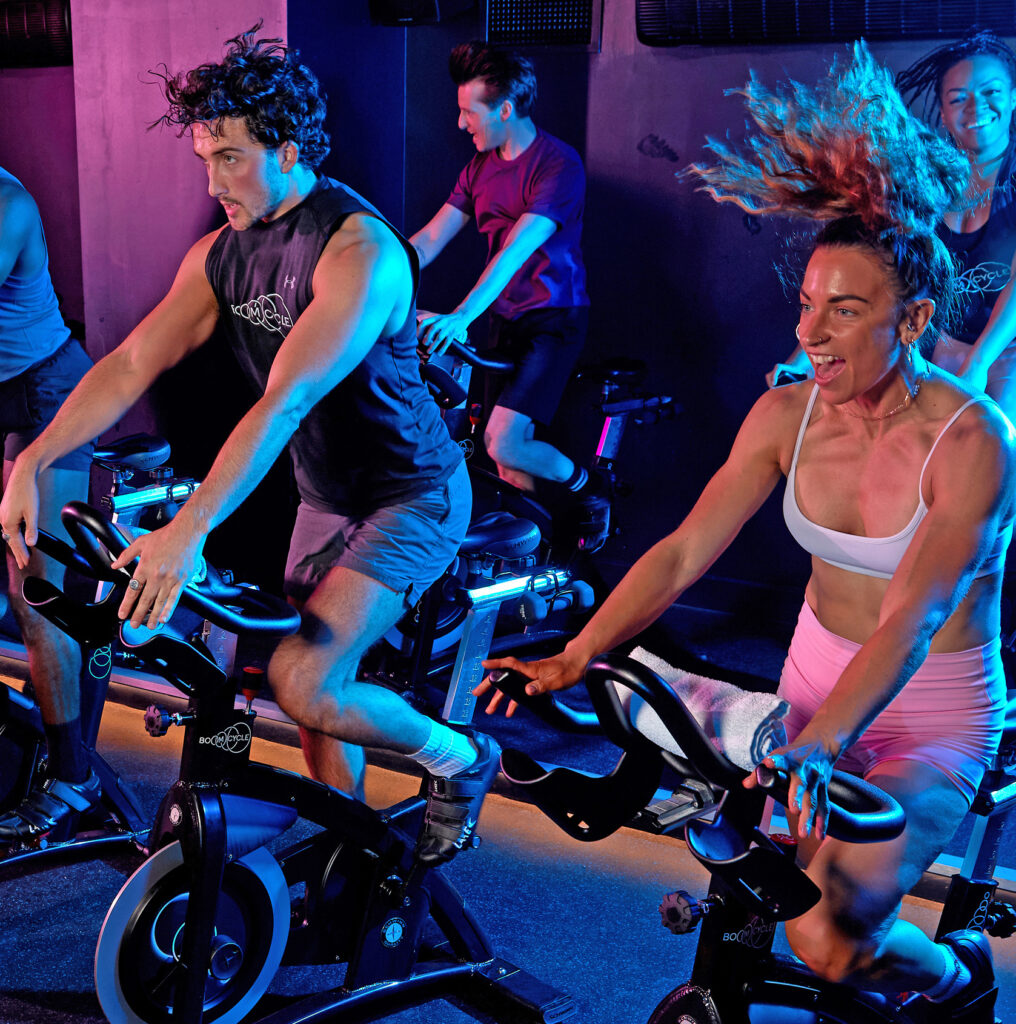
#3 A sustainable agenda
Environmental sustainability has been on the agenda of most businesses for years now, and we’ve seen some moves in the right direction within the indoor cycling sector. Operators such as the UK’s 1Rebel have been free from single-use plastic for a while now, for example, while Terra Hale markets itself as ‘London’s first eco-friendly fitness destination’, generating electricity from its indoor cycling classes (see our special supplement: A Global Crisis?)
From a supplier perspective, BODY BIKE OceanIX is the eco-warrior’s indoor bike – the first in the world to be manufactured using plastic from recycled fishing nets – and in 2021, BODY BIKE also launched a best-in-class eCargo bike. “It’s a bit of a departure from our usual fitness sector territory, but we have the capacity in our factory and it just feels like the next ‘right thing to do’,” said CEO Uffe A Olesen.
But as the energy crisis ramps up, gas and electricity prices threaten the very existence of our sector and the world accelerates towards a climate crisis, clubs can’t view sustainability as a mere passion project. It has to be embedded at the heart of what we do – and as Terra Hale proves, bikes aren’t just energy-efficient thanks to not needing power. They can also be energy generators. Now is the time to explore this potential.
“Bikes aren’t just energy-efficient thanks to not needing power. They can also be energy generators.”
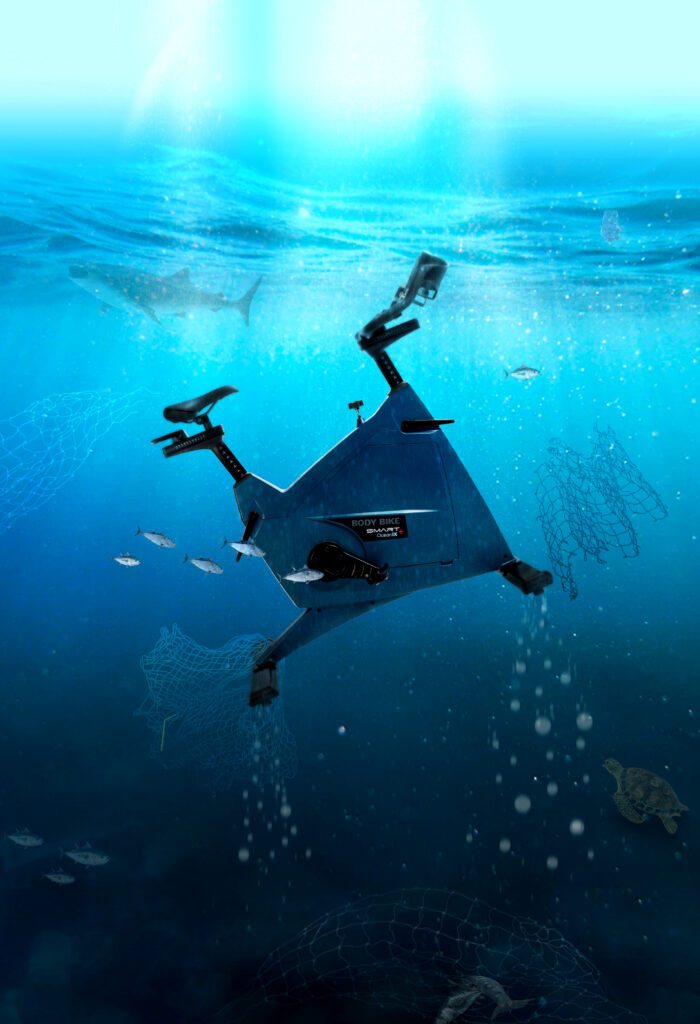
#4 No digital divide
Over recent years, hybrid models have been the hot topic of the fitness sector. Now the buzzword is ‘omnichannel’.
“As the number of channels proliferates, equal importance must be given to digital and in-person,” advised Paul Bowman, CEO of Wexer, in RIDE HIGH #16. “Every customer will use multiple touchpoints and expect to dive straight in to a familiar experience each time.
“The challenge for clubs is to deliver exactly the same user experience whatever the point of entry.”
While we’re seeing a growing number of third parties creating digital content for both in-club and at-home use, Bowman believes clubs’ own star trainers are key to a consistent experience. It’s why Wexer’s ecosystem now allows clubs to stream self-produced content not only to at-home digital platforms, but also onto the big screen of in-club virtual studios.
“Every club operator should maximise opportunities to put their own stars in front of their customers”
“If you’re looking for an advantage over the big digital players and the global fitness influencers, your team of local rockstars with their loyal member followings is it,” Bowman advises. “Every club operator should be maximising opportunities to put these stars in front of customers, both on-site and at-home. And that means creating digital content fronted by them.”
For a great example, look no further than Thailand’s trailblazing Absolute Group, which was quick off the mark in identifying the dual value of digital content for at-home as well as in-club, launching its Absolute X hybrid studio concept in 2022.
“With this second distribution channel, we’re very happy to continue investing in high-quality digital content,” confirms founder and CEO Ben Karoonkornsakul.
It can be an expensive undertaking, yet members will forgive lower production quality if they’re seeing their favourite instructors on-screen. Expect more branded digital experiences that cost-effectively maximise yield and usage of cycling studios, as well as supporting members at home.
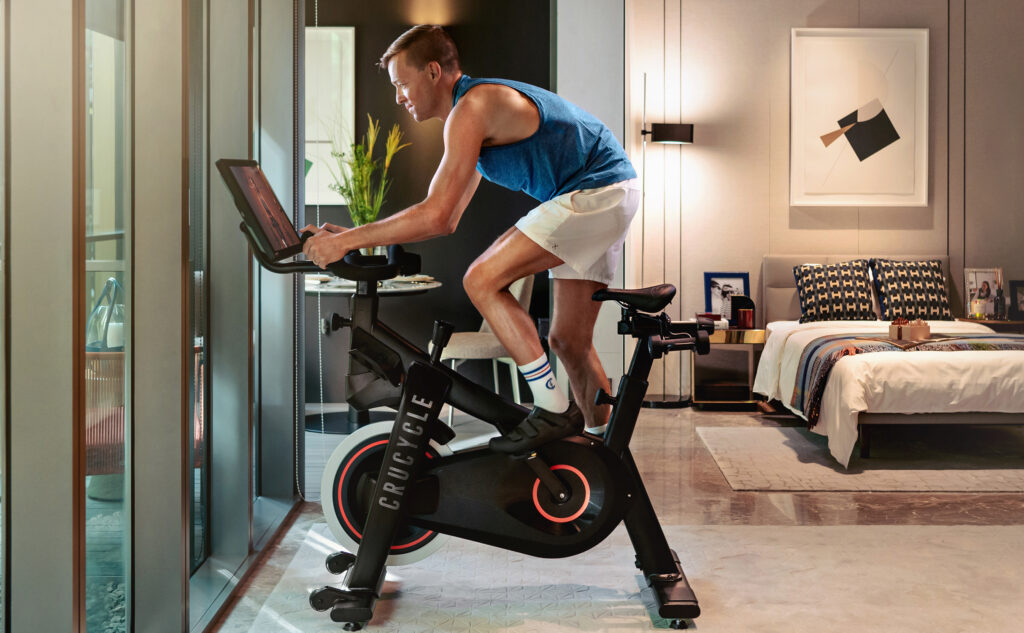
#5 A new reality
In summer 2022, RIDE HIGH spoke to Emma Barry – global fitness authority and renowned group exercise expert – and Les Mills legend Steven Renata about indoor cycling past, present and future.
In our chat, Barry was hugely enthusiastic about the digital innovations coming down the line for group cycling. Some of the topics she touched on might reasonably expect to be a trend in their own right, but in our top 10 we’ve pushed them all together into one digital innovations trend that hints at an exhilarating future for indoor cycling.
We’re talking AR, VR, the metaverse. “Anything that brings digital enhancement into the real world for an extended, mixed reality – especially when it includes a social element of cycling together, remotely,” says Barry.
“We’ve seen the rise and fall of Peloton and friends, but they’ve unquestionably given a huge nod to health and wellness along the way, driving up awareness of fitness and just how good the experience can be, as well as showing us all how ‘sticky’ an online community can be.”
She continues: “Once they get the eyewear down, the bike is the perfect tool for AR and VR. We already wear sunglasses when we’re riding outside, so once the headsets aren’t so large and sweat-inducing, that’s going to be very interesting. We’ll literally be able to be in another world as we cycle.
“AR will be able to transpose all kinds of information and metrics to those who are motivated by data”
“AR will be able to transpose all kinds of information and metrics to those motivated by data: personalised power output, position in the pack, headwind, lighting, direction cues and so on. VR will be able to emulate and enhance existing worlds, such as the great races around the globe: the Ironman World Championship in Kona, the Tour de France, the Red Bull UCI Pump Track World Champs. We’ll be able to achieve unlimited participation and presumably get to sync data to achieve validated comparison.
“Weaving in and out of the metaverse – the meeting place of different realities – will become more seamless and enhanced over the next 20 years as we take our data and avatars with us across the various worlds to achieve our own unique goals.
“Finally, one really cool thing I saw at CES 2020 was Delta Airlines’ unveiling of Parallel Reality, designed to tailor a passenger’s experience using biometrics. We’re talking complete immersion in an opt-in, personalised experience – and it’s now being trialled at Detroit airport.
“Essentially, multiple passengers can look at the same screen but only see their own unique travel data: their flight information and directions to the gate, weather at their final destination, directions to a Sky Club – all in the language of the passenger’s choice.
“It’s not too much of a stretch to see how the fitness data we already cast to screens – heart rate, for example – could be expanded on and personalised in an equally meaningful way.”
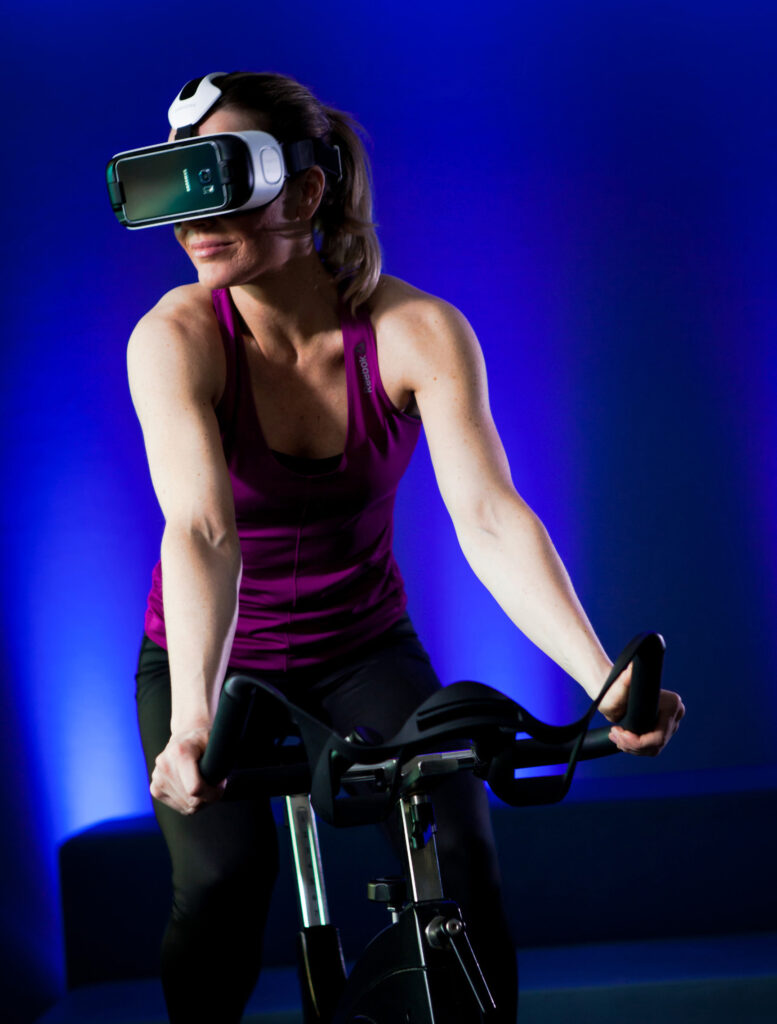
#6 Self-determination
While it’s true that not everyone wants to focus on metrics in their workouts – it’s why rhythm cycling has become so popular the world over – nevertheless there are many fitness fans around the world who like to keep track of their progress. And of course, whether you’re an app developer or club operator, this data can be gold dust; used well, it is the source of unparalleled behavioural insights and the basis of a personalised experience.
Yet the question remains: who owns this data? And increasingly the answer is: the individual. If you buy into that – and at RIDE HIGH, we do – then our role as fitness providers must be to help people make sense of their data, giving them the insights and understanding they need to plot their next steps, without overstepping the privacy mark.
This will be a challenge as exercisers increasingly mix and match workout locations and platforms; it will first require a willingness to openly share data across platforms, so the individual can opt into and be presented with one cohesive picture of their efforts.
This is why BODY BIKE has already done away with consoles, instead allowing exercisers to download its app and use their own mobile phone as their console. They then immediately take their data away with them at the end of each workout. It’s also why the BODY BIKE Strava club was created, allowing exercisers to upload their BODY BIKE indoor cycling workouts into their Strava account. They can then share workout data with fellow enthusiasts and access a full record of all their cycling sessions in one place.
We need more of this moving forward, putting members and their progress first by making data sharing easier – especially if we are to avoid tech fatigue as digital solutions continue to proliferate and it becomes harder and harder to access one clear picture.
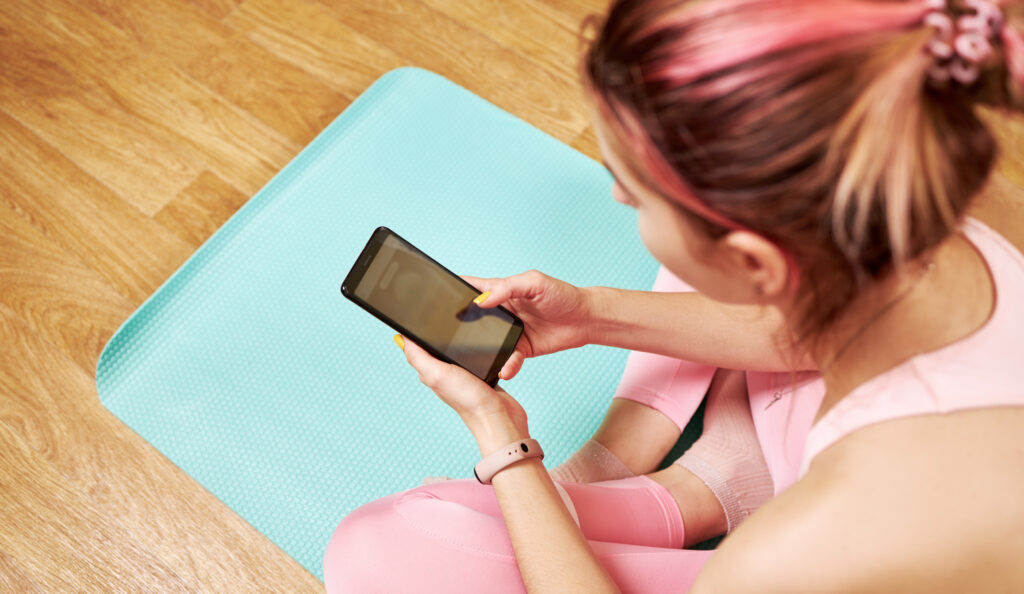
#7 Fusion workouts
We’ve reported previously on the growth of fusion cycling classes and now, in 2023, this trend looks set to go up another gear, with the likes of Barry’s rolling out RIDE x LIFT.
The class follows Barry’s tried-and-tested formula, whereby members alternate between cardio and strength-based programming. In this case, however, the bike replaces the treadmill of the brand’s signature bootcamp class, making for a more accessible and lower-impact workout.
Why is this trend so interesting? Because it ticks so many boxes: a chance for operators to create something unique for their clubs – a signature, branded experience – and for members to take part in a ‘bang for their buck’ workout that keeps them engaged, gives them a great all-round workout and offers high perceived value for money.
As clubs continue to innovate to keep their cycling workouts fresh, fusion classes will become an increasingly popular tool.
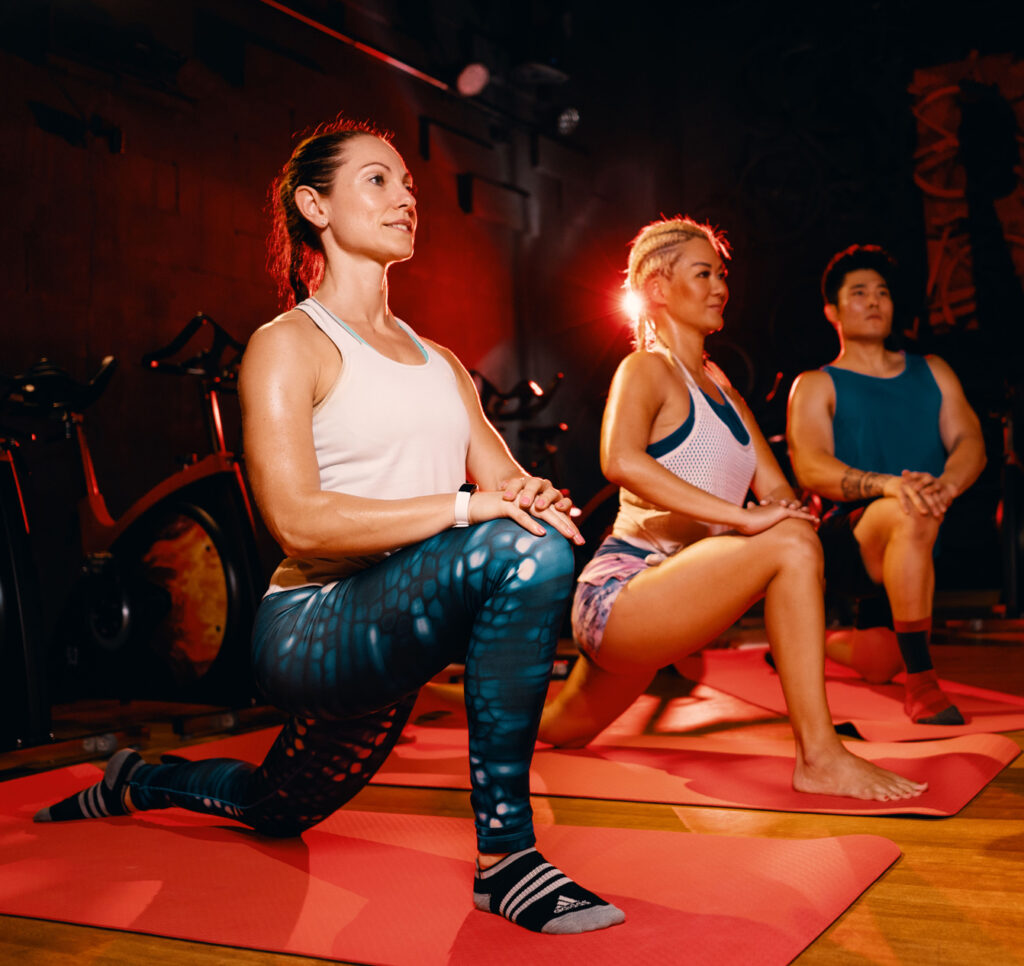
#8 An educational experience
The future of indoor cycling will, we hope, see instructor education become more specialised.
RIDE HIGH recently spoke to Angela Reed-Fox of the Indoor Cycling Institute, who told us: “Many instructors just want to excel at indoor cycling: the discipline is heading into its own space and that’s entirely right.
“I believe it’s outdated to expect instructors to also have a certificate in gym instructing, PT or exercise to music. Cycling shouldn’t be CPD on top of one of those qualifications. Rather, there should be regularly updated, indoor cycling CPD on top of a dedicated, entry-level indoor cycling certificate.”
Hear absolutely hear. For an excellent discussion on how indoor cycling education and qualifications need to evolve to give us the instructor workforce we need for the future, check out our recent panel discussion here.
“Many instructors just want to excel at indoor cycling: the discipline is heading into its own space and that’s entirely right. It shouldn’t be CPD on top of other qualifications”
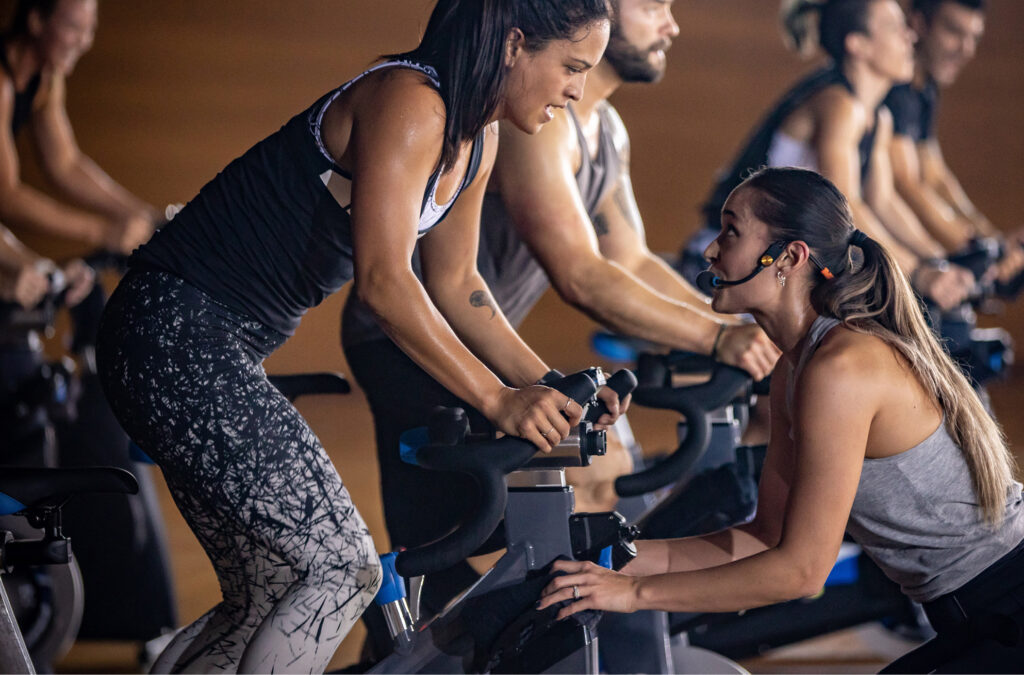
#9 Recovery-plus
Recovery is one of the buzzwords in the fitness sector right now; RIDE HIGH has already reported on how this is impacting programming in the indoor cycling arena.
But what about instructors? For a long time almost disregarded in this respect – expected to simply keep going, churning out class after class after class with little rest – attention is finally turning to helping indoor cycling instructors avoid downtime through illness and injury, and ultimately extend their careers.
In the UK, Susie Millen’s My Vocal Fitness focuses on preserving instructor voices. RIDE HIGH stalwart Noël Nocciolo does similar in the US under the banner of PEP for FitPros.
“As fitness professionals, we learn about almost every muscle in the body,” says Millen. “Rarely, though, are we taught how to use our voice or a microphone effectively. The result: instructors across the planet aren’t vocally ready to teach the volume of classes they’re timetabled to deliver each week. Their voices become unreliable, deteriorating, even lost.”
Meanwhile, power training expert Hunter Allen recently offered RIDE HIGH some incredible insights into the physiological strain placed on cycling instructors’ bodies, in a fascinating feature on the Training Stress Score.
“After six weeks of instructing two cycling classes a day, an instructor’s chronic training load could be 160 – the same as a pro cyclist at the end of the Tour de France,” he explained. Little wonder, then, that injury and illness are so common among frequently timetabled cycle studio stars.
Our view: when it comes to our workforce, it shouldn’t just be about recovery. We need to see a much greater focus on prevention of injury and strain, bringing longevity to instructors’ careers in a healthy and sustainable way.
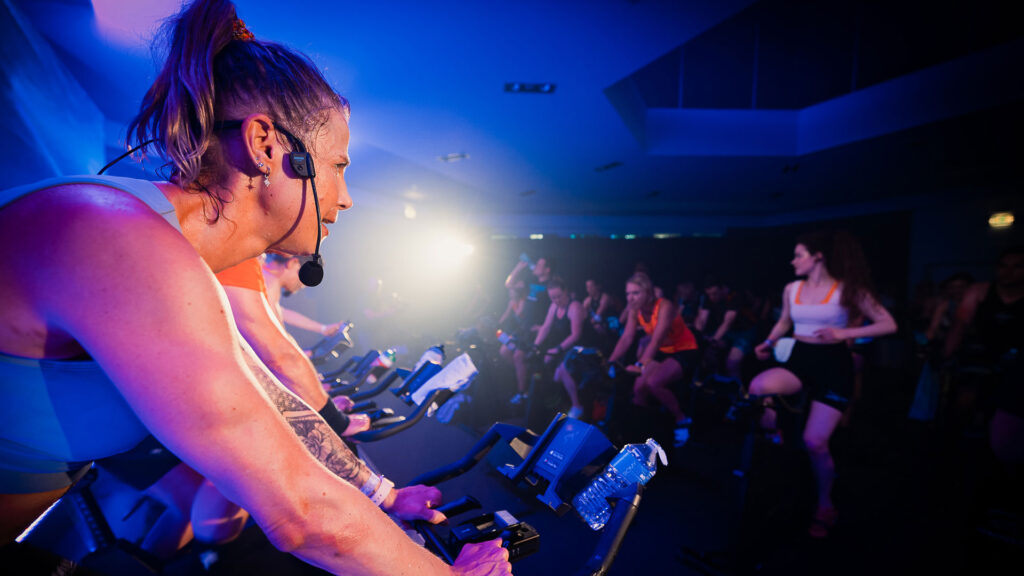
#10 A broader church
Over the last couple of years, we’ve seen fitness newcomers finally turning to our sector, their newfound appreciation of our value born from the pandemic. In turn, a more diverse global member base is gathering – one that spans a broad range of fitness levels, experiences and expectations.
On the one hand, says global fitness authority Emma Barry, there are now more people enjoying ‘The Sport of Fitness’ – being fit for fit’s sake and finding a favourite exercise genre, rather than training to be fit for a sport.
Yet at the same time, we’re also in an era when – still jaded by the pandemic – many are exercising for reasons that are as much mental, emotional and even spiritual as they are physical. “People are looking for entertainment, they’re looking for release, and most of all, at this time in history, they’re looking for joy and hope,” confirms Barry.
This diversity in the member base holds an important lesson for indoor cycling instructors and providers, as Tash Marshall Bean explained in a recent interview with RIDE HIGH: “With the pandemic bringing a wave of new people into fitness, it’s more important than ever that we take classes back to basics.
“I’m currently seeing far too many instructors making the choreography too complicated for their riders and leaving people behind. Every single participant must feel successful, and instructors must (re)learn how to integrate new riders with well-versed riders to achieve this.”
“The more generic the experience, the less likely you are to really engage someone. We need targeted classes.”
Even better, said Louise Ager in the same panel discussion, would be a return to “diversity in class styles to support a broader audience in indoor cycling”.
She added: “The more generic the experience, the less likely you are to really engage someone. We need targeted classes that have a purpose and an intentional audience: classes for beginners, for overweight people, for seniors, for endurance enthusiasts, for those short of time, for fans of different music genres.”
This conscious targeting is exactly what House of Workouts has done with the launch of its new SclptCycle programme.
One thing is for sure: moving forward the indoor cycling sector must work to ensure its product delivers strongly to an increasingly diverse audience.
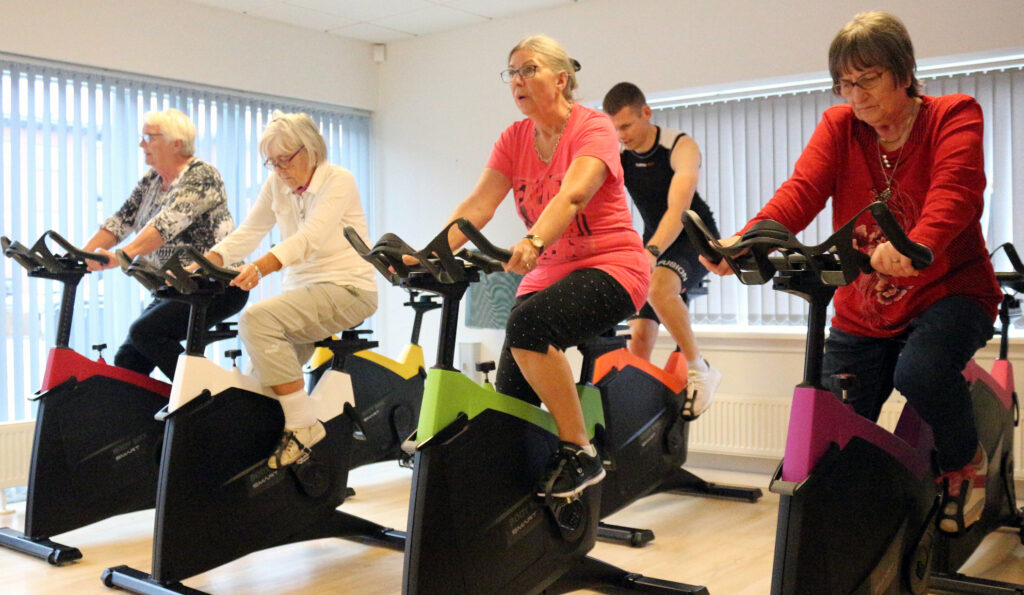
The lesser of two evils
Our latest edition of RIDE HIGH includes a must-read supplement – A Global Crisis? – in which we speak to operators across Europe, Asia-Pacific, Africa and the Americas to understand the region-by-region challenges facing the fitness sector at the moment, and the strategies that might be deployed to navigate them.
Check out all our expert comments here or download a PDF of the full magazine, including the supplement, above.
Here, we share the perspective of Ben Lucas, founder and CEO of Flow Athletic in Australia. Interview conducted 27 October 2022.
We aren’t really experiencing an energy crisis in Australia at the moment. Our challenge is more around inflationary pressures off the back of two lockdowns.
The pandemic took 35 per cent off our numbers – membership and turnover – and we’re now trying to regrow our business in an economic headwind. We’re doing well though. I’m feeling optimistic.
There are cost of living concerns in Australia and as a result we currently lose one to two members a week. However, we’re adding five or six a week; we operate at the premium end of the market, meaning most people still have disposable income to spend with us.
So, what are the cost of living concerns for consumers here? It’s mainly interest rates – meaning mortgages and rent – as well as petrol and food, the latter due to a series of natural disasters affecting production. We aren’t hearing people talking about electricity or gas prices at the moment.
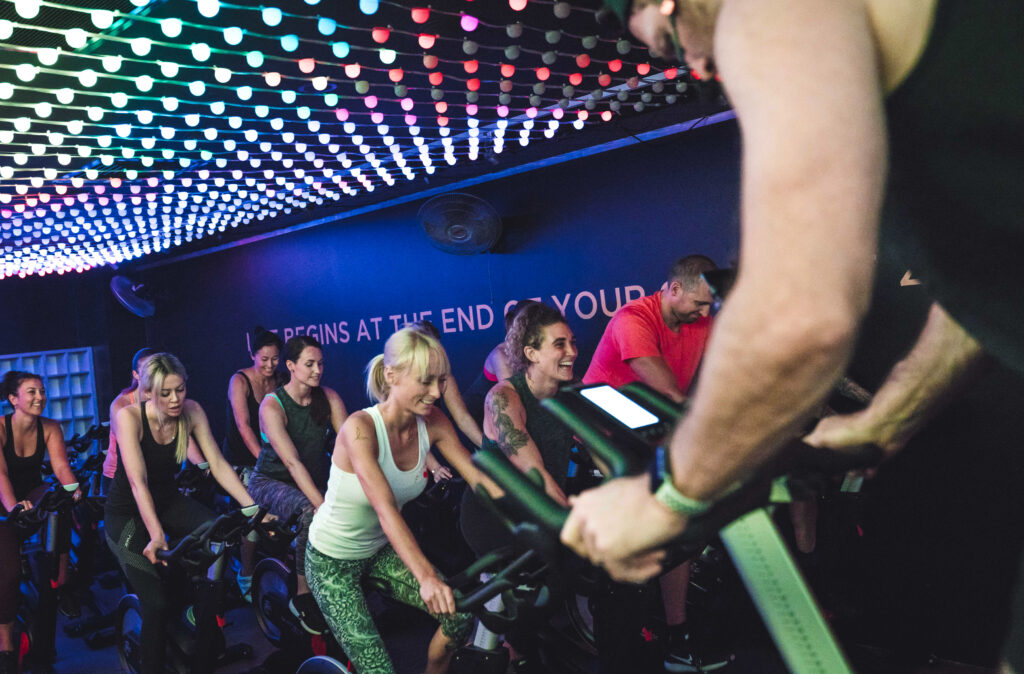
For our business, what’s going up are wages – I value our team and want to make sure they can afford to live in the current climate – and energy to a lesser degree. Fortunately, rent is unchanged; commercial sector rents aren’t going up in the same way as residential rents, because with a pending global recession, landlords would rather keep properties full.
“Electricity prices are due to go up, but compared to being locked down for 250 days, give me an extra A$16,000 of electricity fees any day”
Electricity prices are due to go up a predicted 20 per cent in 2023, and a further 10 per cent in 2024, which obviously is a challenge. But if our bill goes up from, say, A$30,000 to A$36,000 a year, will that spell the end of our business? Not really. It isn’t fantastic, but compared to being shut for 250 days… give me an extra A$16,000 of electricity fees any day. Framed in the context of the last two and a half years, today’s economic headwinds are the least of our challenges.
I do, however, believe the cost of electricity could double over the next five years, so we do need to be smart about it. As a premium operation, we wouldn’t want to cut energy usage anywhere in the club, so we’re looking to install a solar power system. Costing around A$35,000, this could generate around 60 per cent of our electricity needs – including our air con and lighting – and achieve payback in three years.
Adapting to change
Our latest edition of RIDE HIGH includes a must-read supplement – A Global Crisis? – in which we speak to operators across Europe, Asia-Pacific, Africa and the Americas to understand the region-by-region challenges facing the fitness sector at the moment, and the strategies that might be deployed to navigate them.
Check out all our expert comments here or download a PDF of the full magazine, including the supplement, above.
Here, we share the perspective of Timothy Felix, CEO of Active Fitness in Singapore. Interview conducted 31 October 2022.
There’s an adjustment period going on in Singapore at the moment. Now we’re out of the pandemic bubble and allowed to do what we want again, people’s disposable income – for a while heavily focused on health and wellness – is being spread more broadly as they seek to experience life again, and especially travel. Disposable income remains strong, in spite of inflation going through the roof, but our sector isn’t enjoying as much of it as it has over the last couple of years.
Customers are also reluctant to sign up for long-term packages now, preferring to pay a premium for smaller packages that make it easier to travel and flex around having to return to the office.
“Indoor cycling supply has grown to the point that it’s outstripping demand. That’s driving down prices just as inflation is soaring and operating costs rising”
Meanwhile, particularly in indoor cycling, supply has grown to the point that it’s outstripping demand. Our lockdowns weren’t as extended as in other markets – Singapore is small and the population obedient – and people were invested in their health, so many new brands emerged during that time. I would estimate that the number of clubs offering indoor cycling doubled during 2021.
That’s now driving down prices and forcing some closures. People here can afford to pay more, but over-supply is pushing things the other way just as inflation is soaring and operating costs rising.
All of this is an interesting challenge and one we’re developing strategies to address – focusing on local, residential areas where we can build community engagement, for example.
Then in terms of business costs, electricity prices are up: they had doubled but are currently back down to about 1.5 times what they were. Our rented mall locations prevent us from installing anything like solar power, but we are educating our staff to keep energy usage as low as possible.
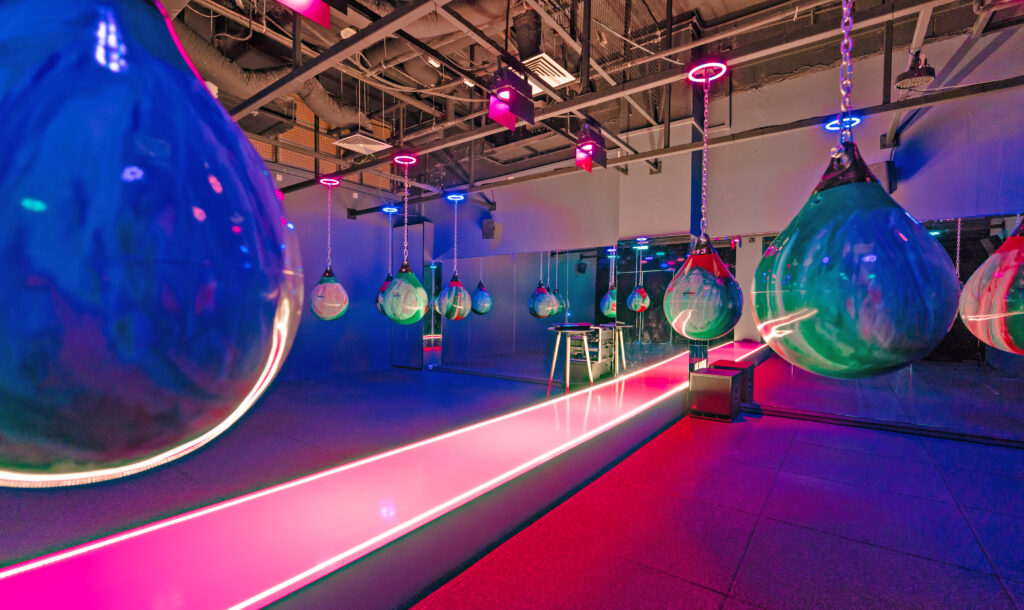
We already have LED lighting and non-powered equipment, and as a boutique operation we can turn things off when there are no classes. But we have to deliver a certain level of experience, and air conditioning is a big part of that. We’ve turned the temperature up a couple of degrees in our reception areas, but we can’t allow our workout spaces to become stuffy. Rising electricity prices are simply a bullet we have to bite.
The greater challenge comes in the shape of manpower costs and rent, which are very high in Singapore. We’re identifying unnecessary personnel costs and restructuring accordingly, so we can offer better deals to those who are vital to our operation.
But I’m pragmatic about it all. I’ve run my own company for nine years and I know you can’t always fly high. A lot of people in fitness have only ever known it to be on an upswing, as it was for perhaps five years before COVID, but things can go downhill too, however strong your business and brand. Rather than looking for things to blame it on, you have to be ready to identify the issues and implement change.
- 1
- 2

